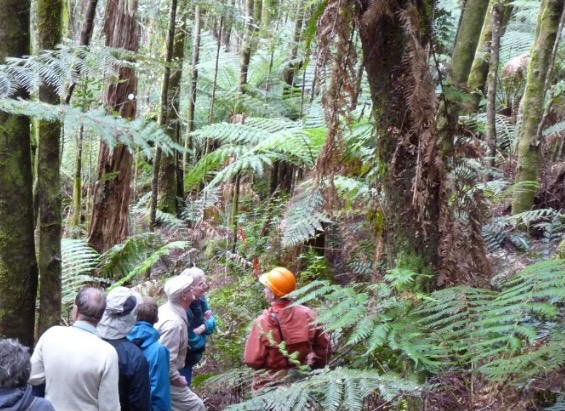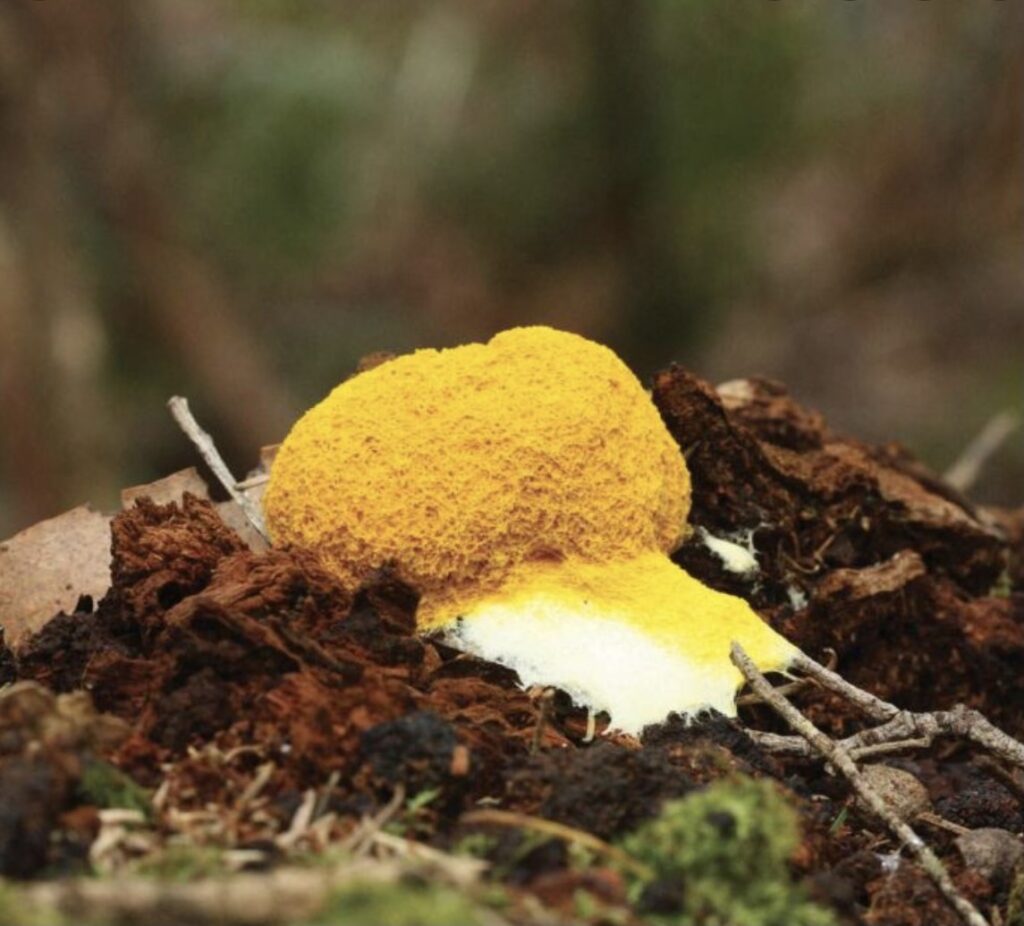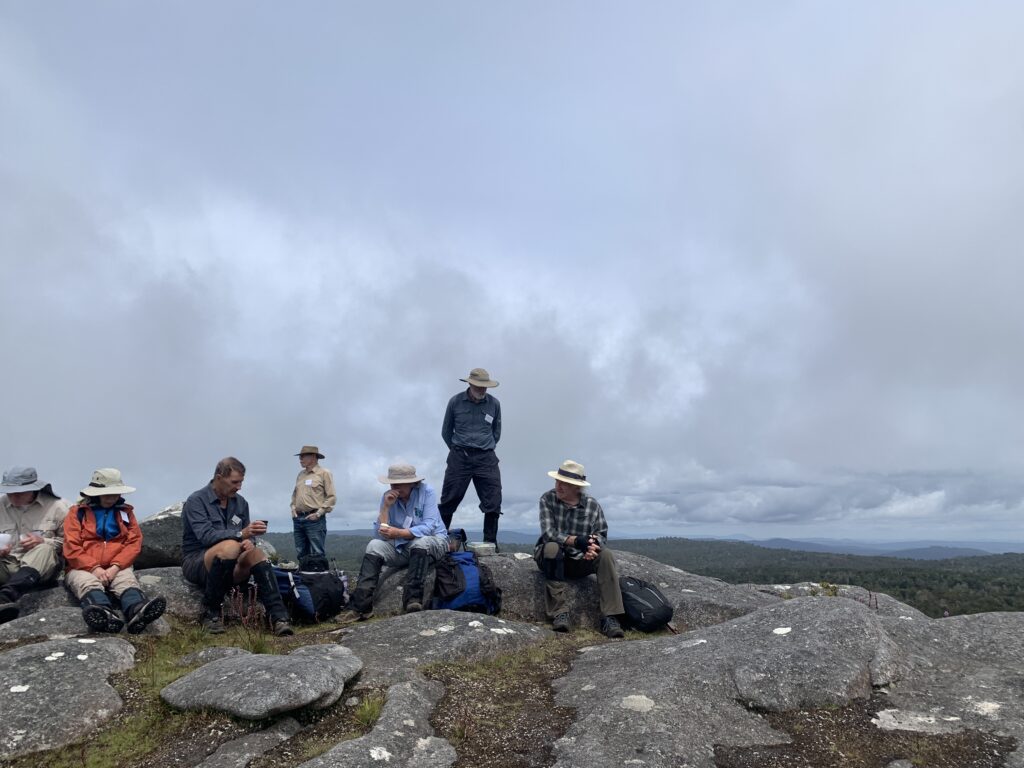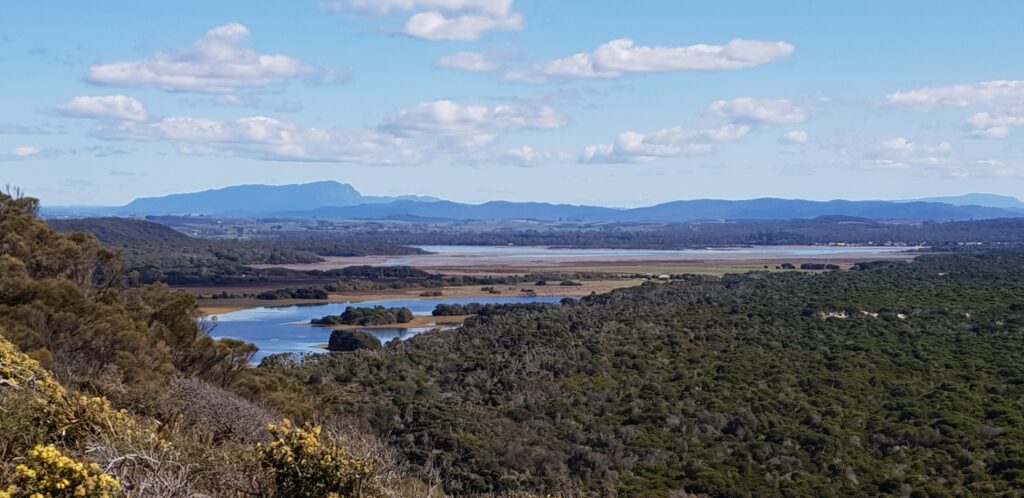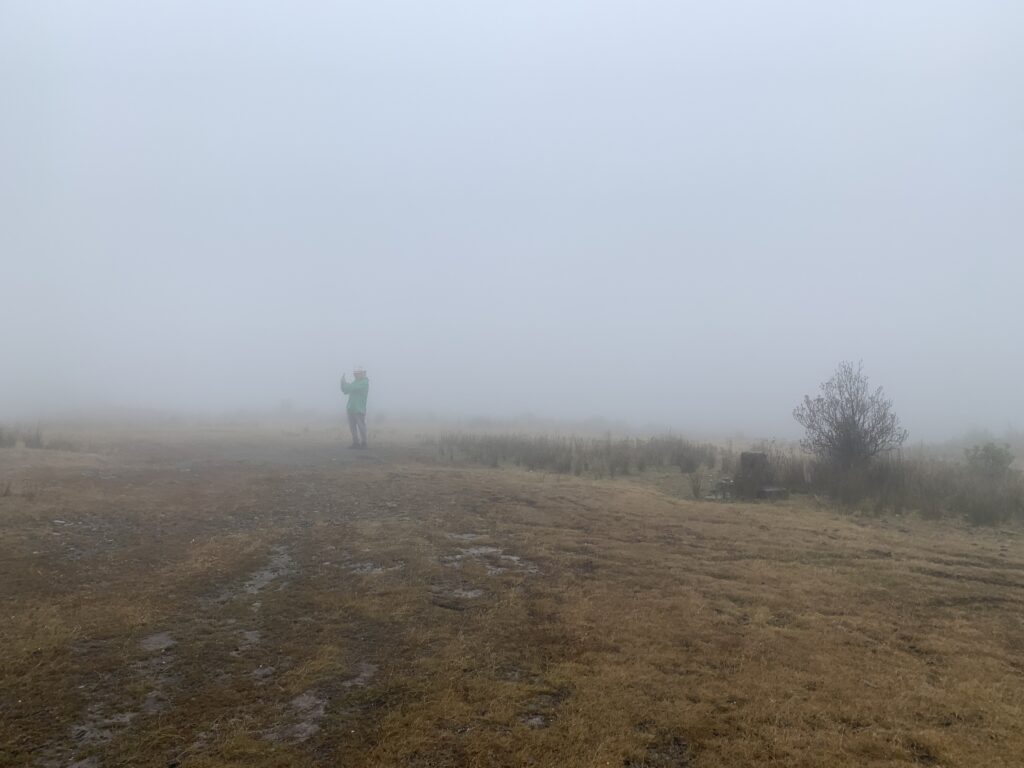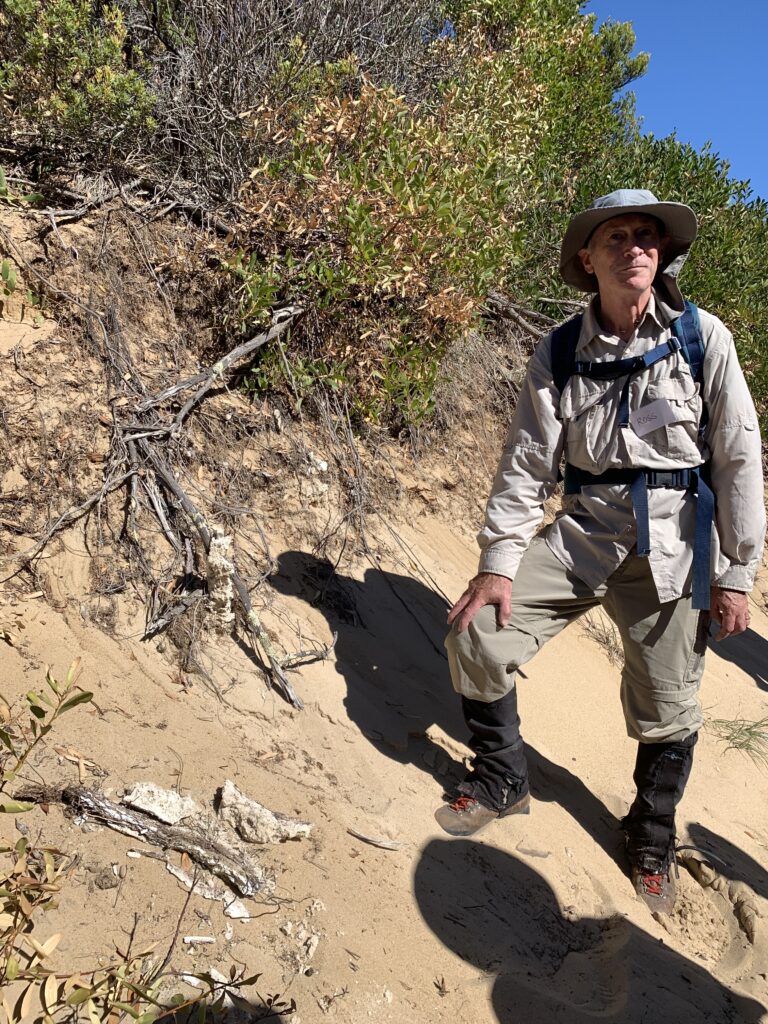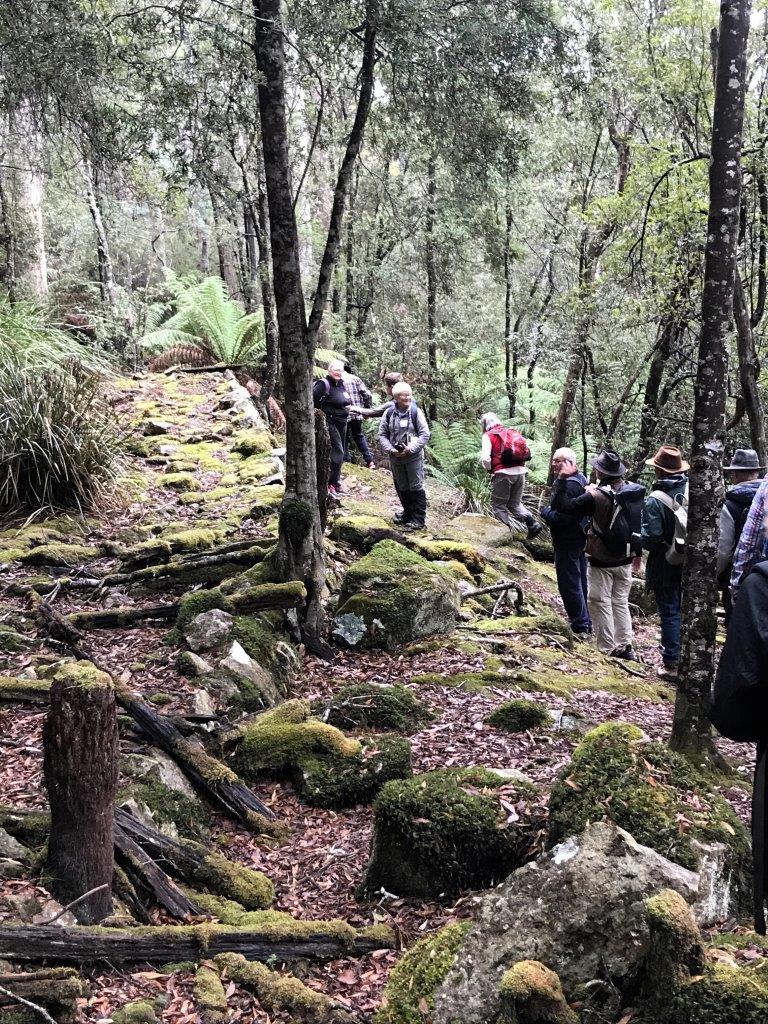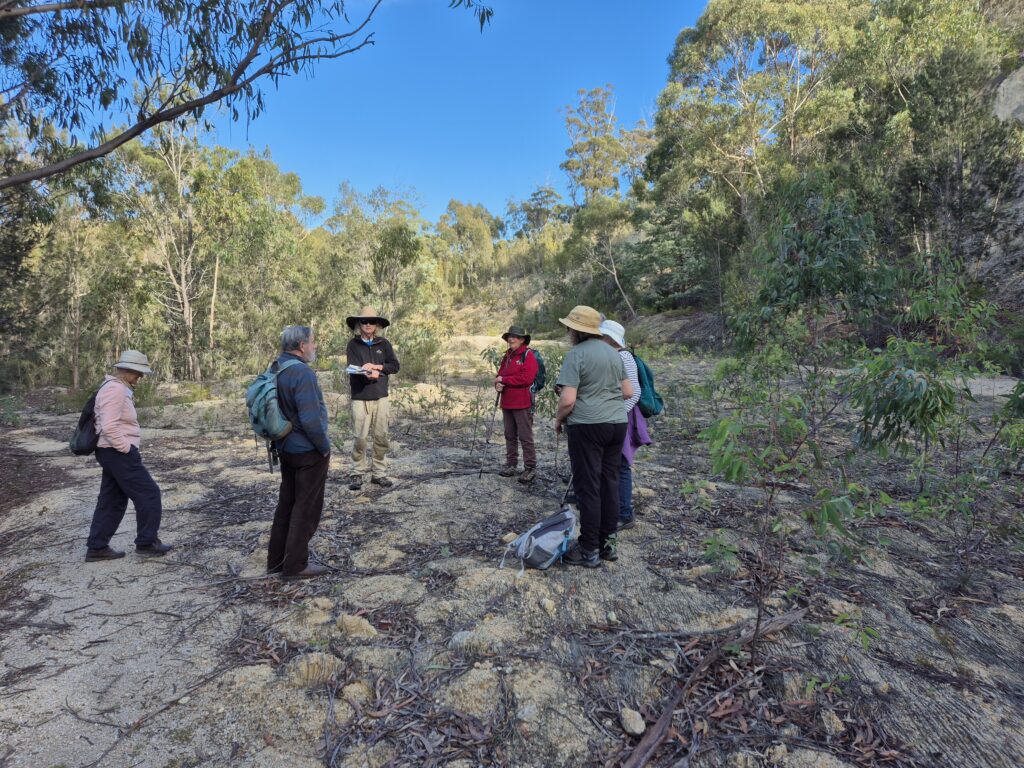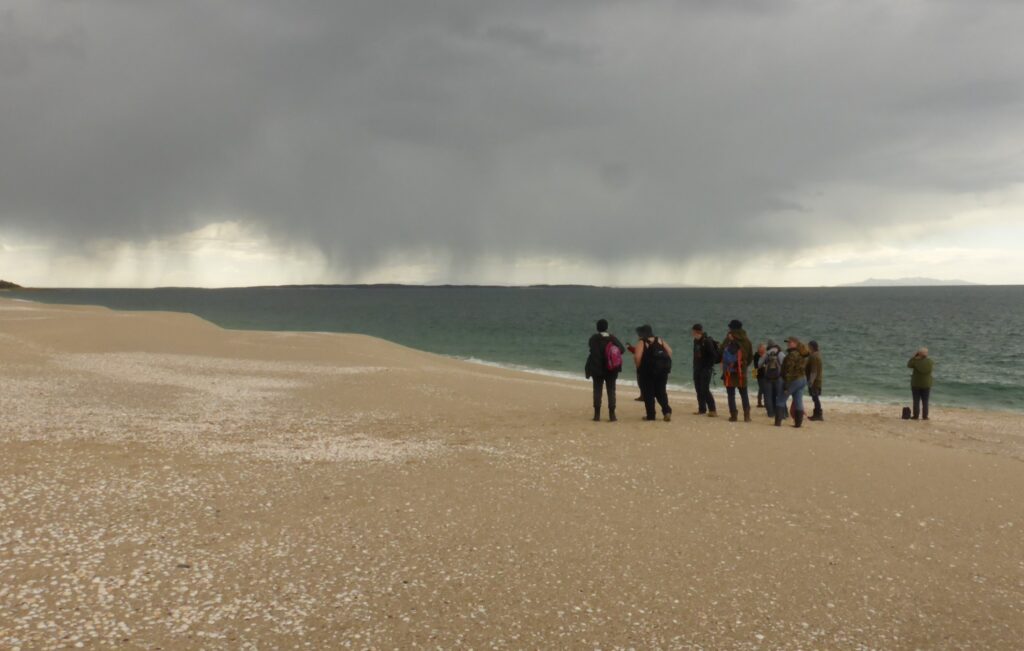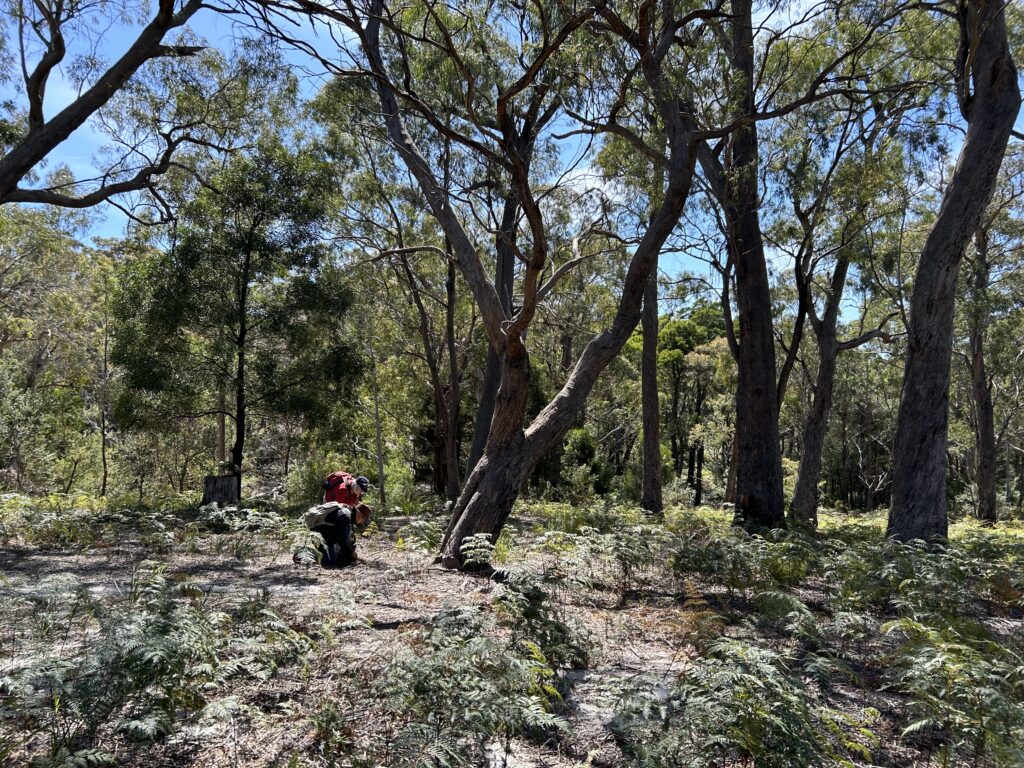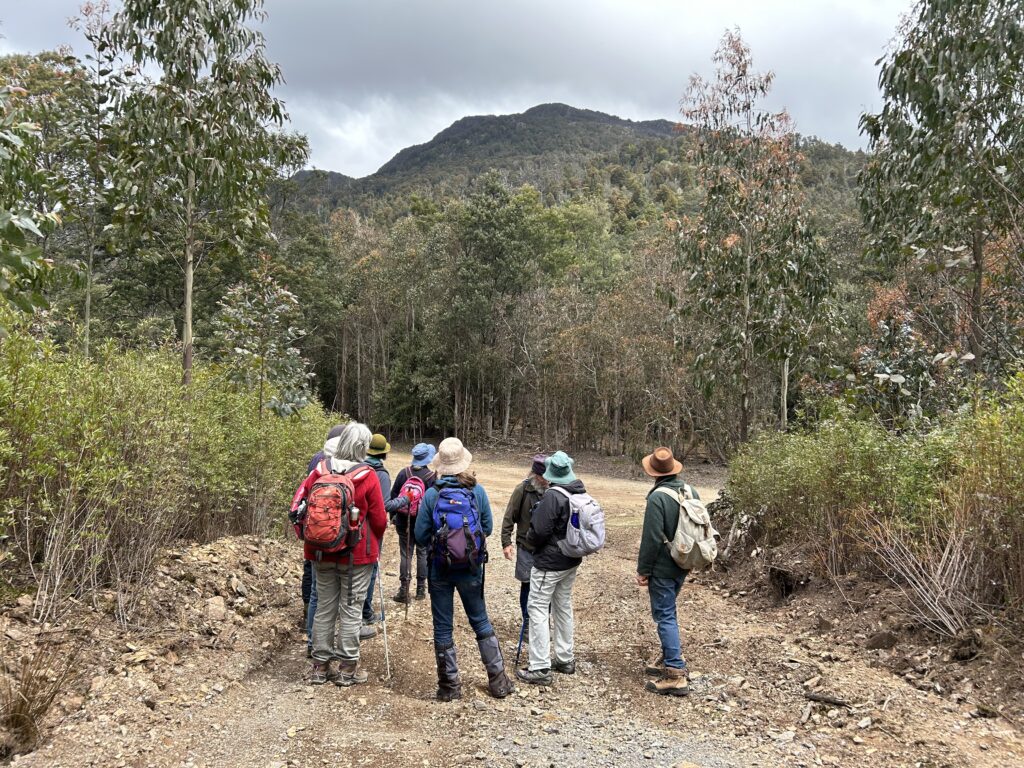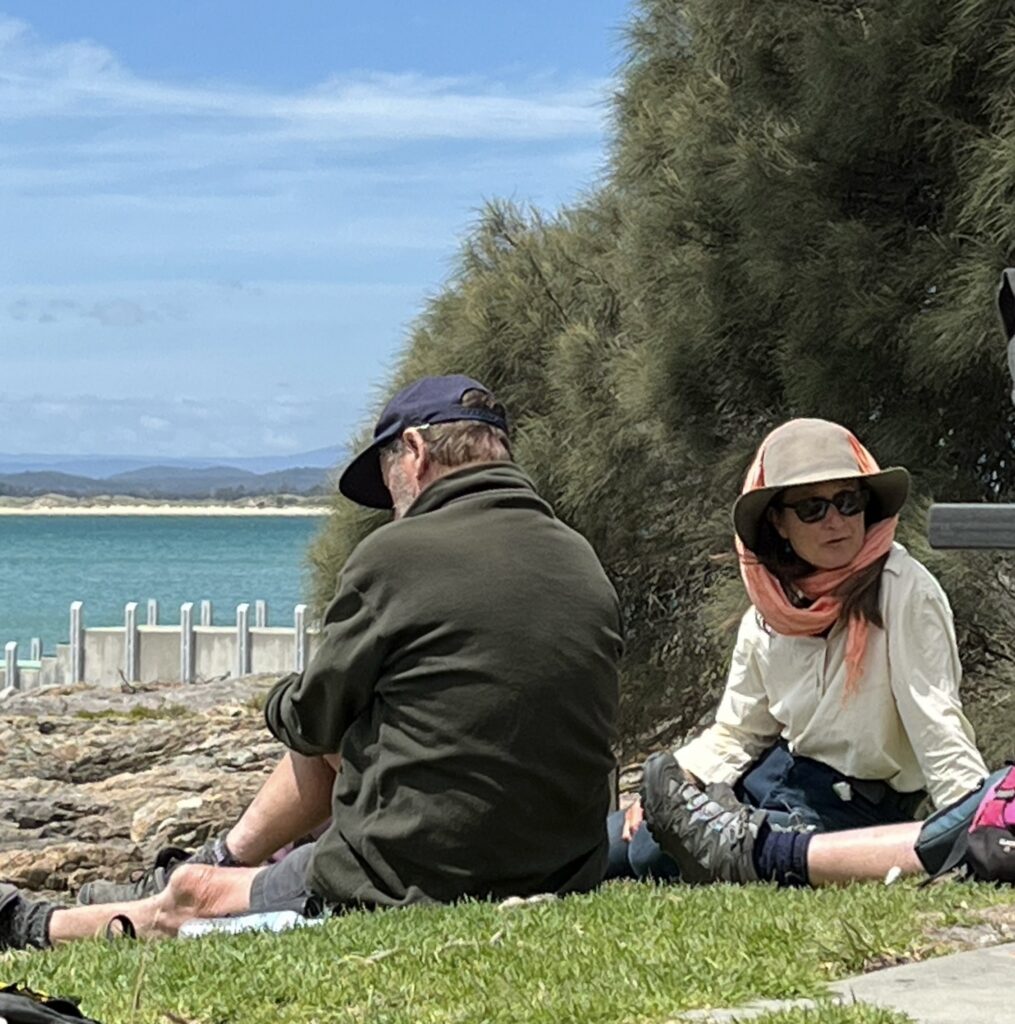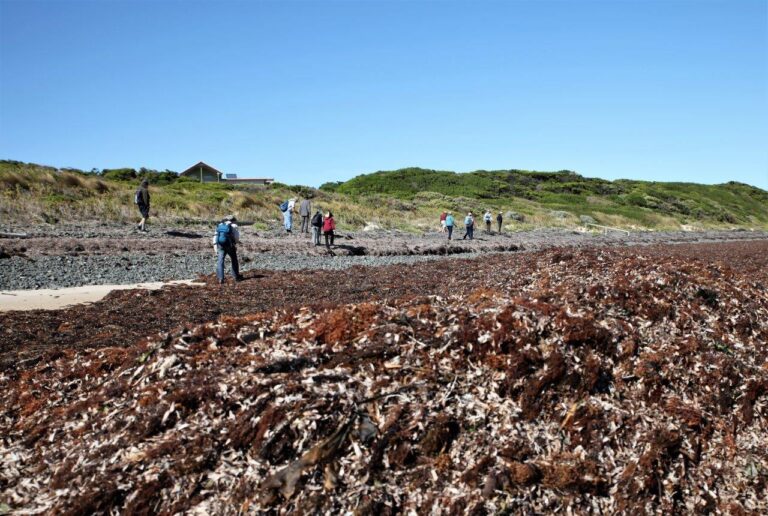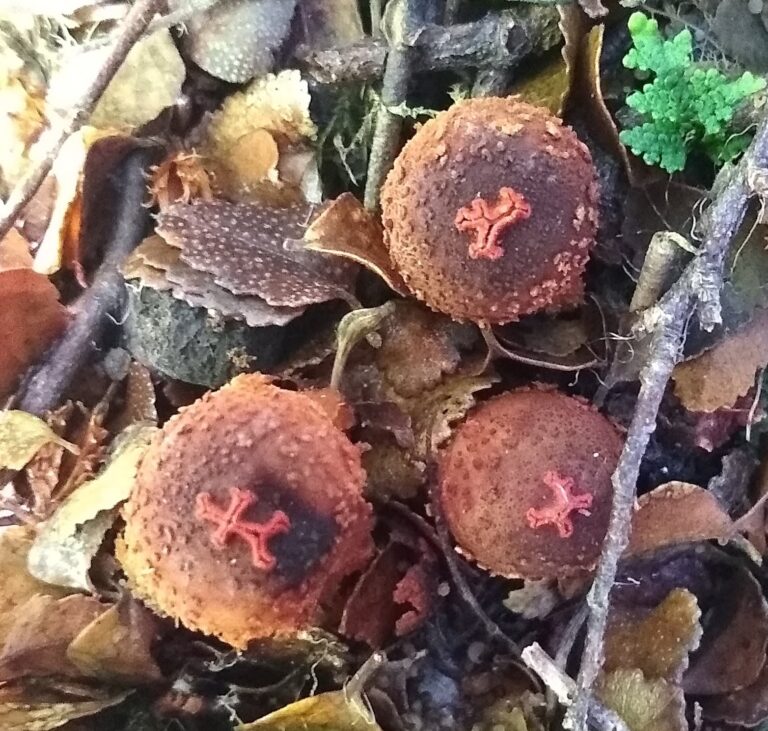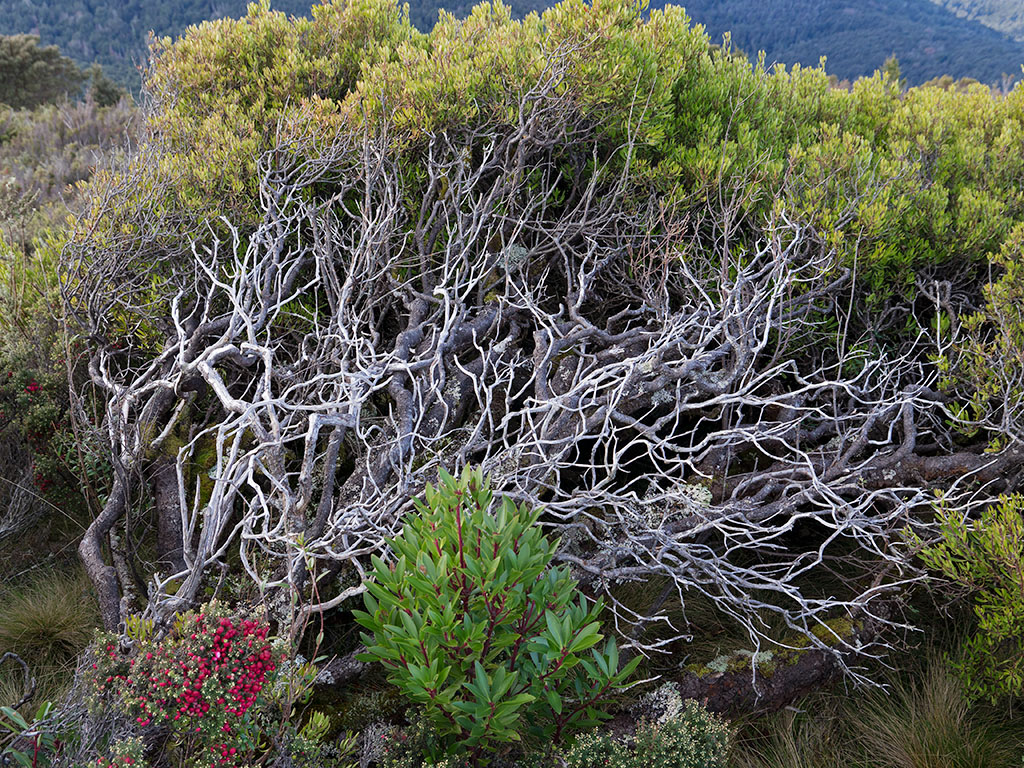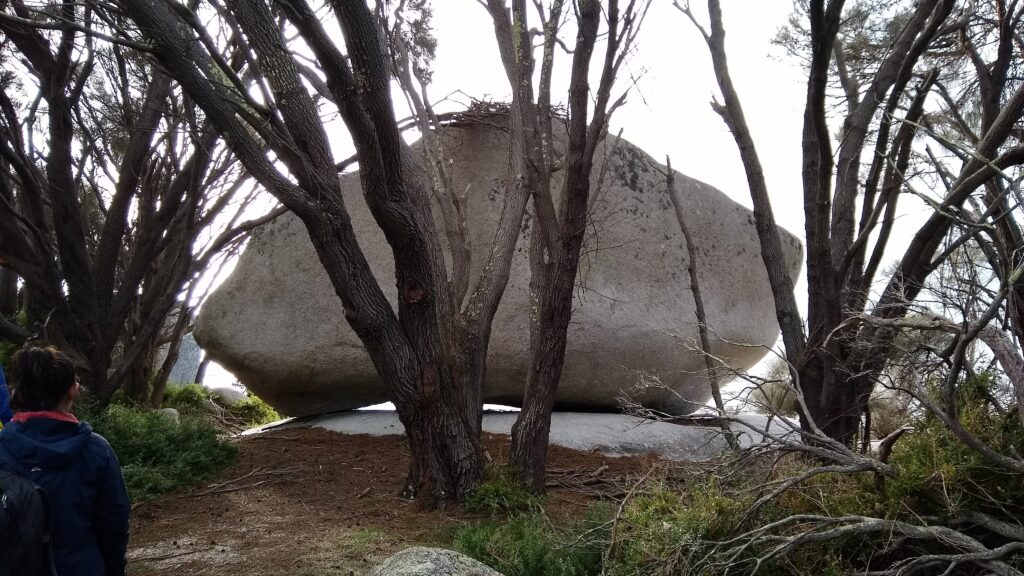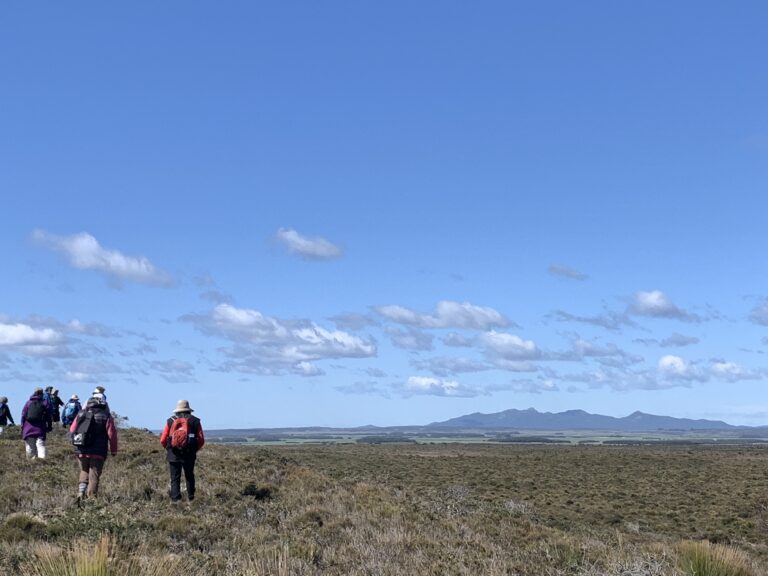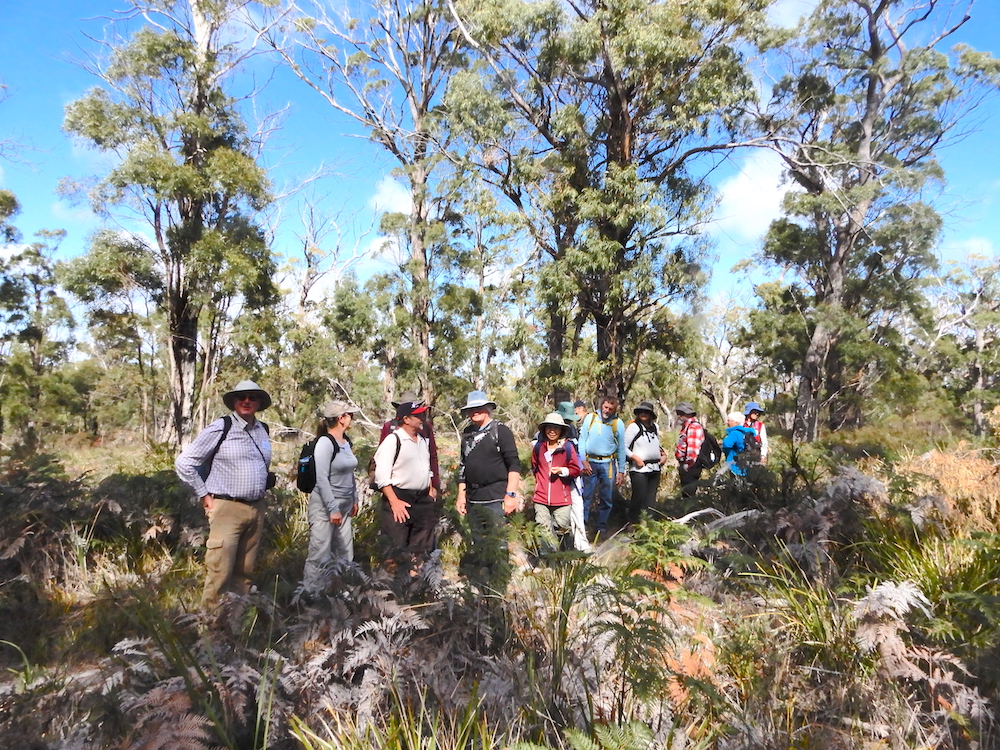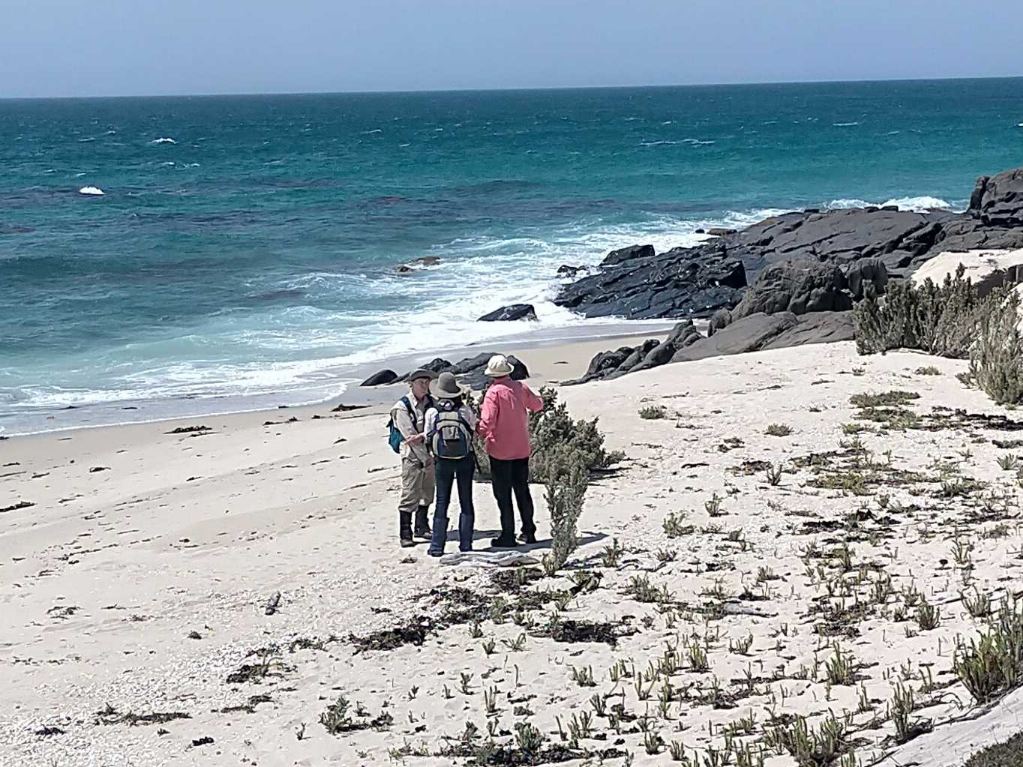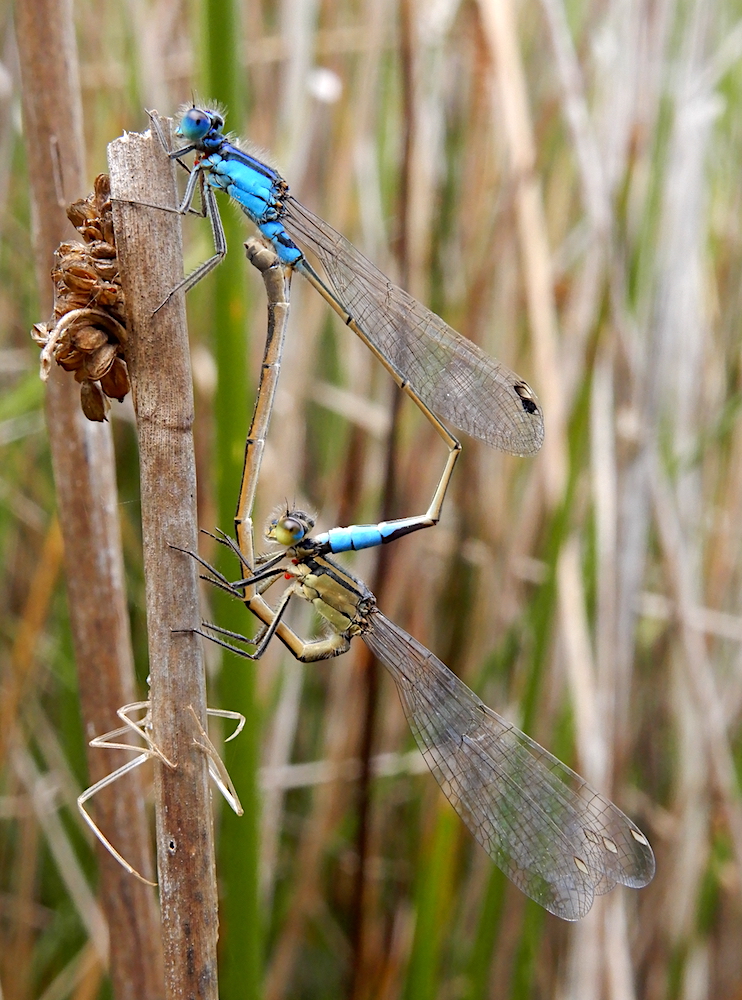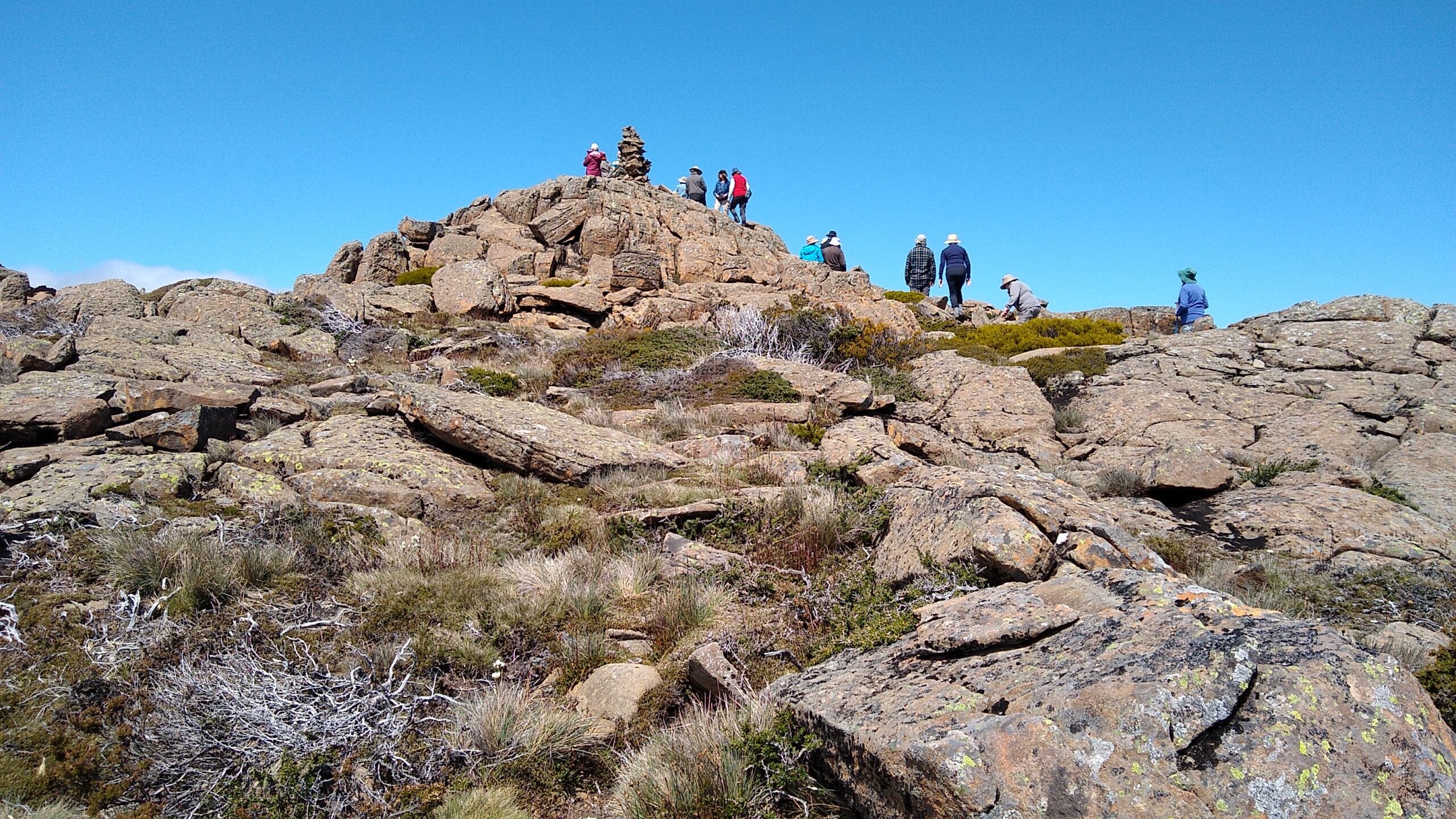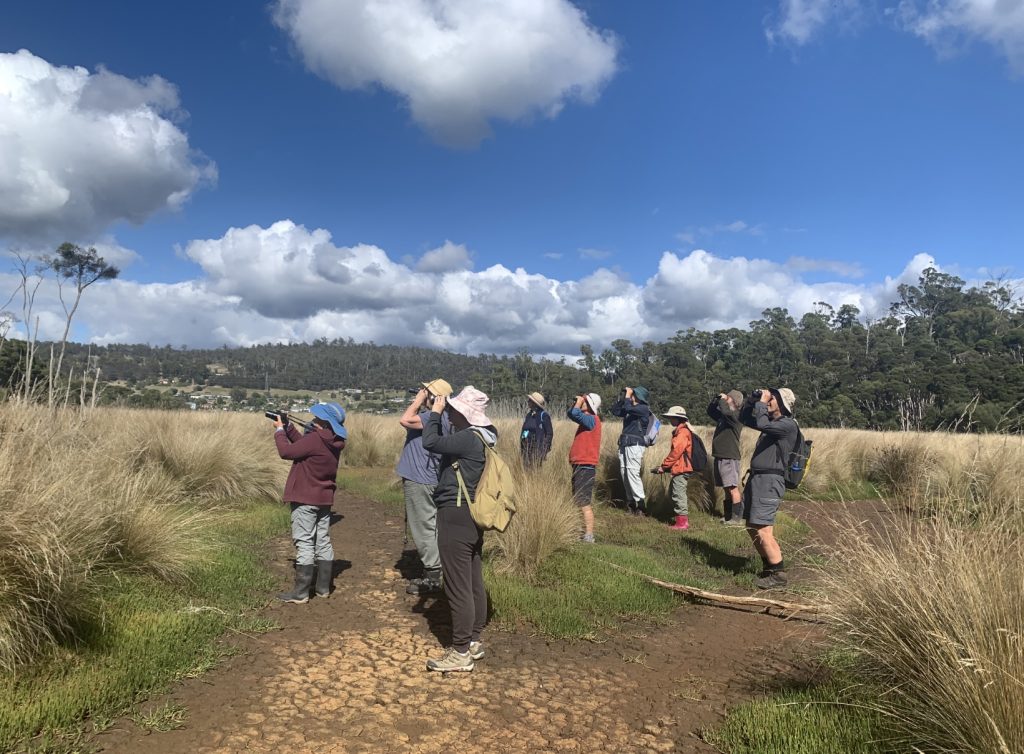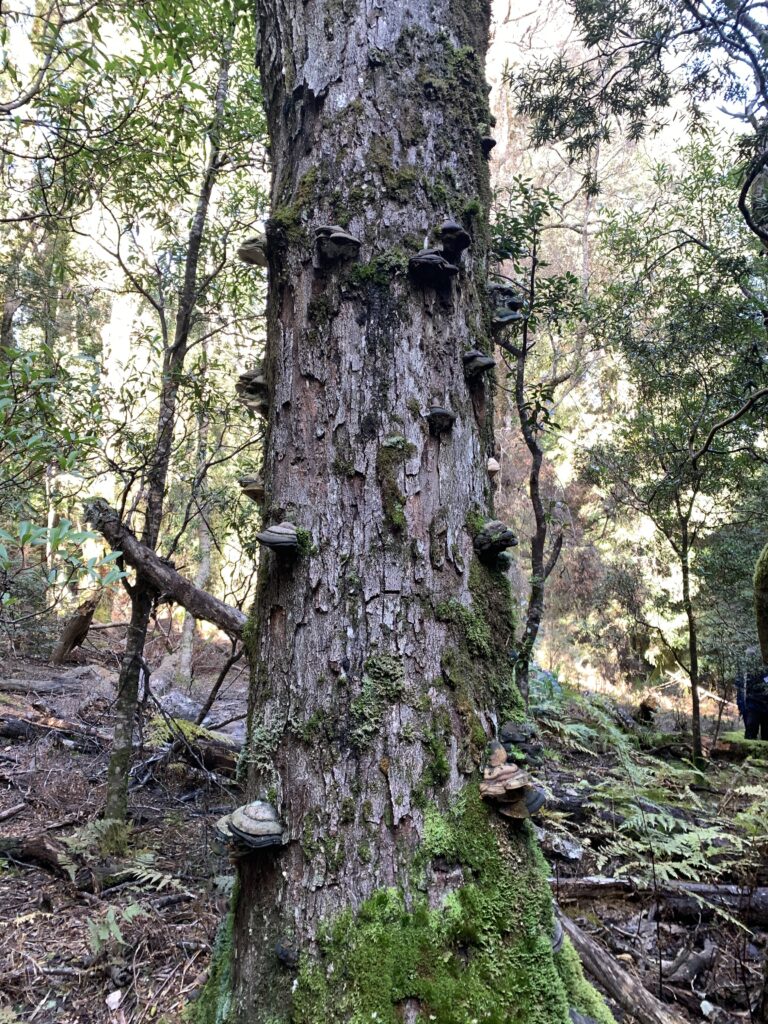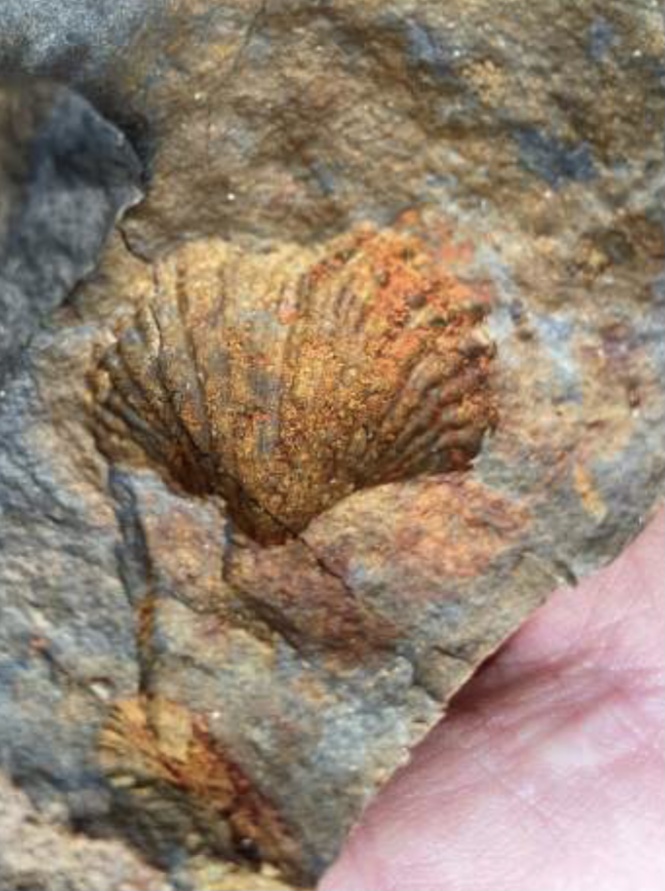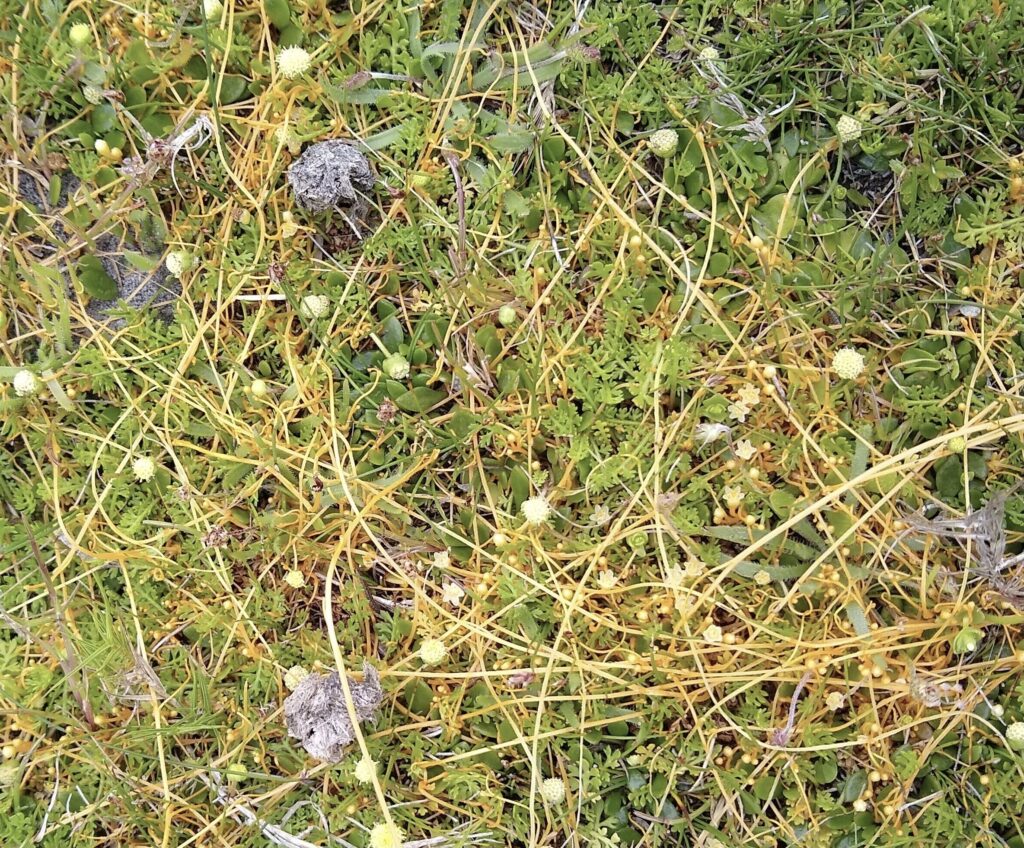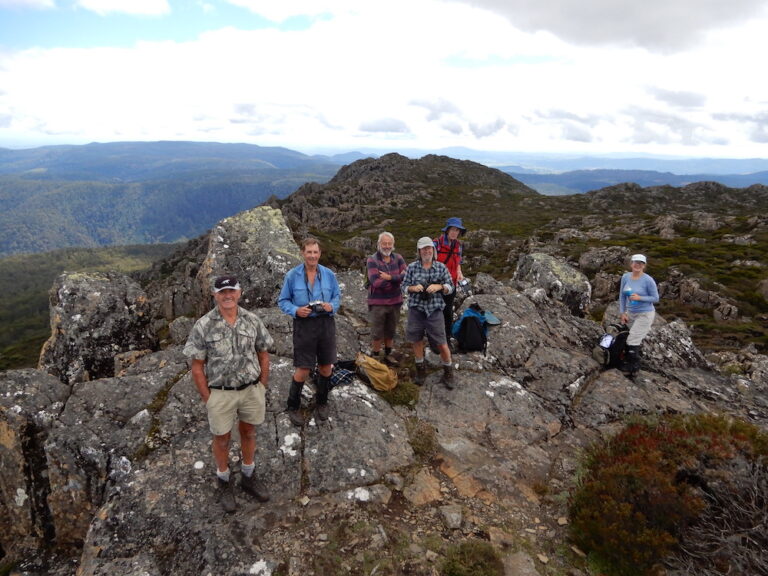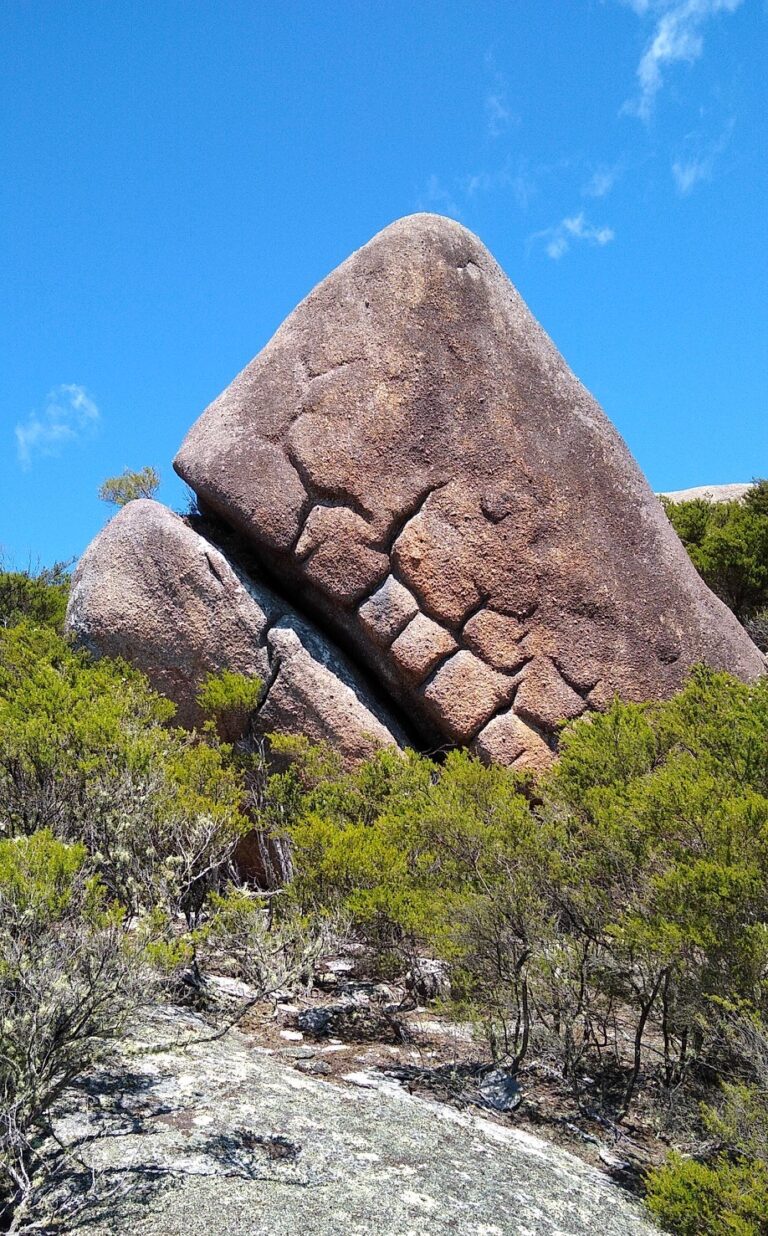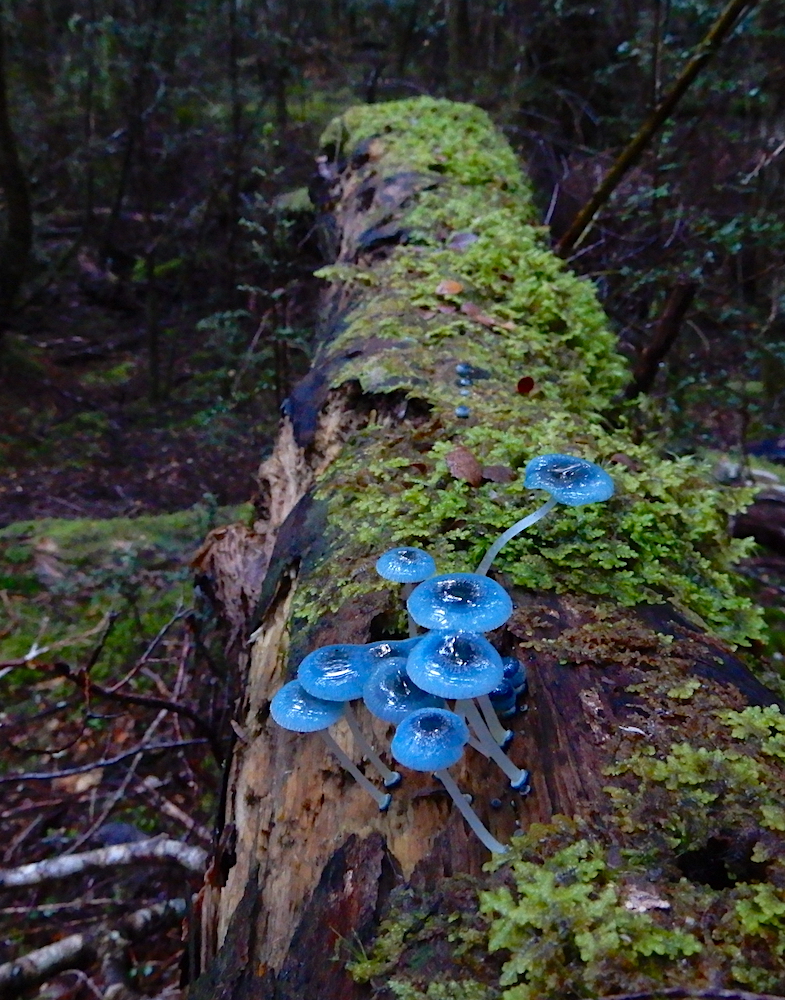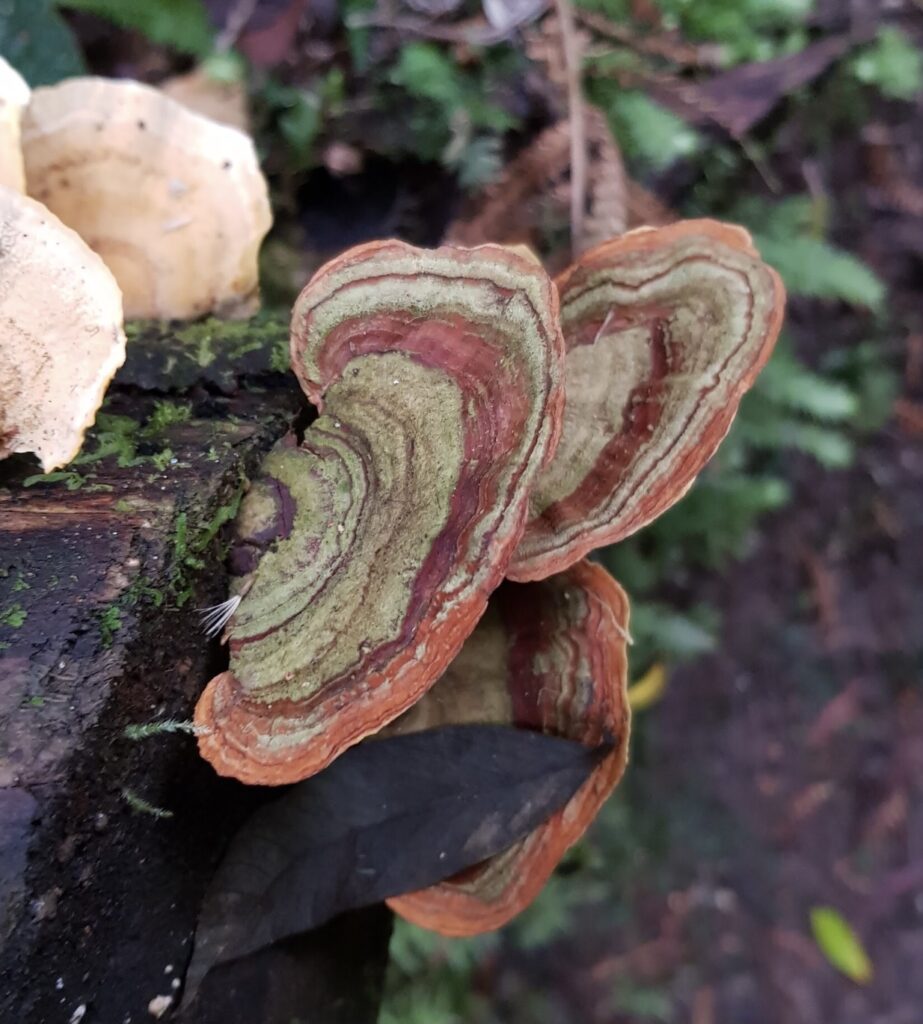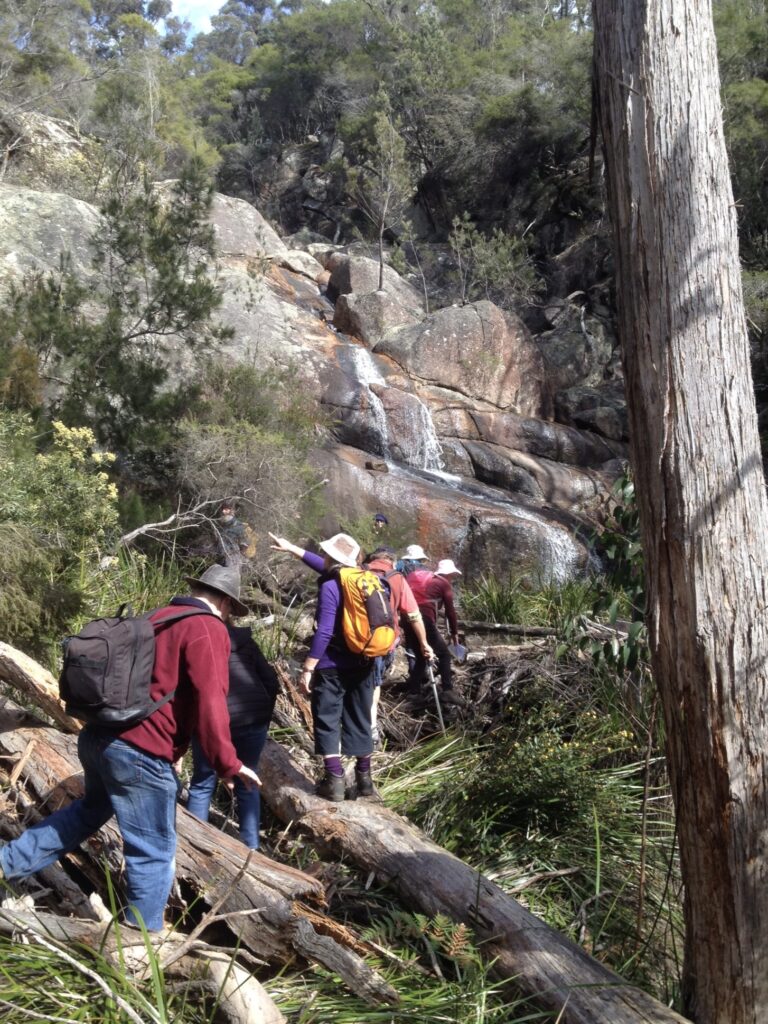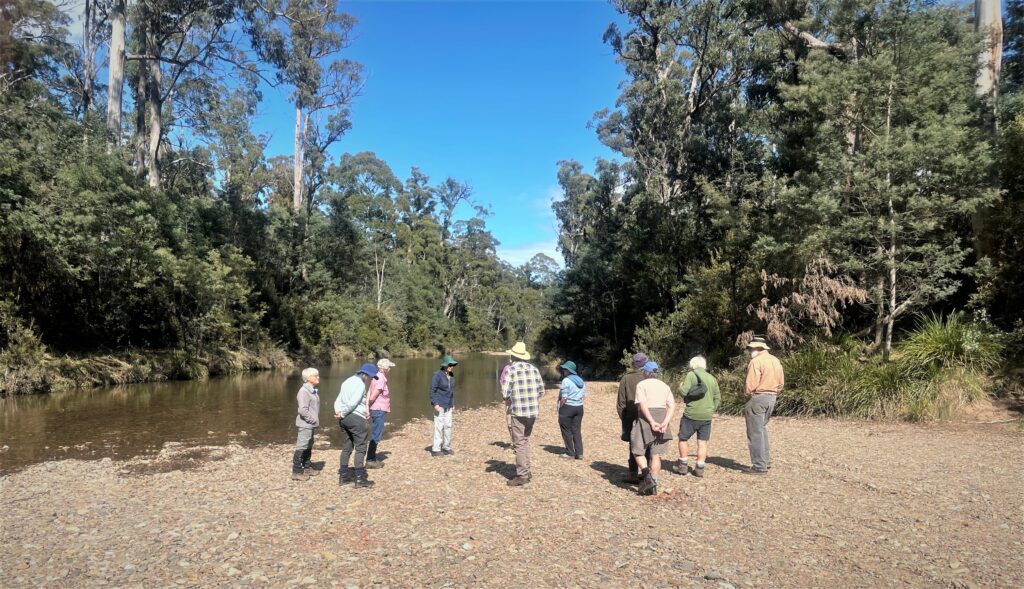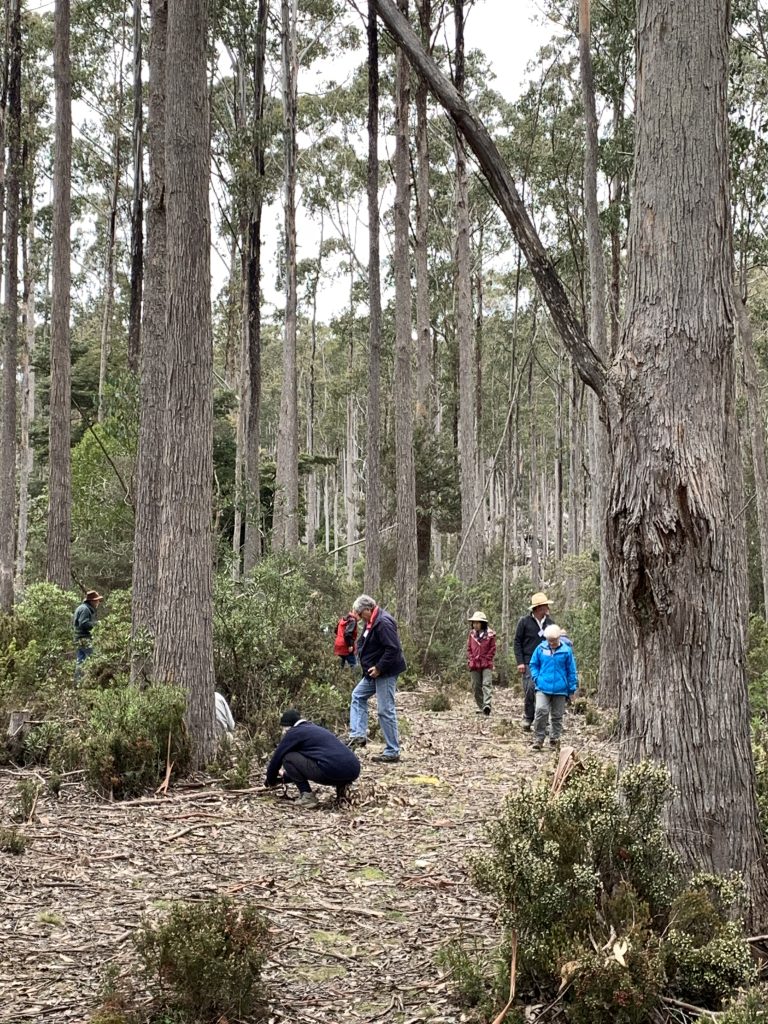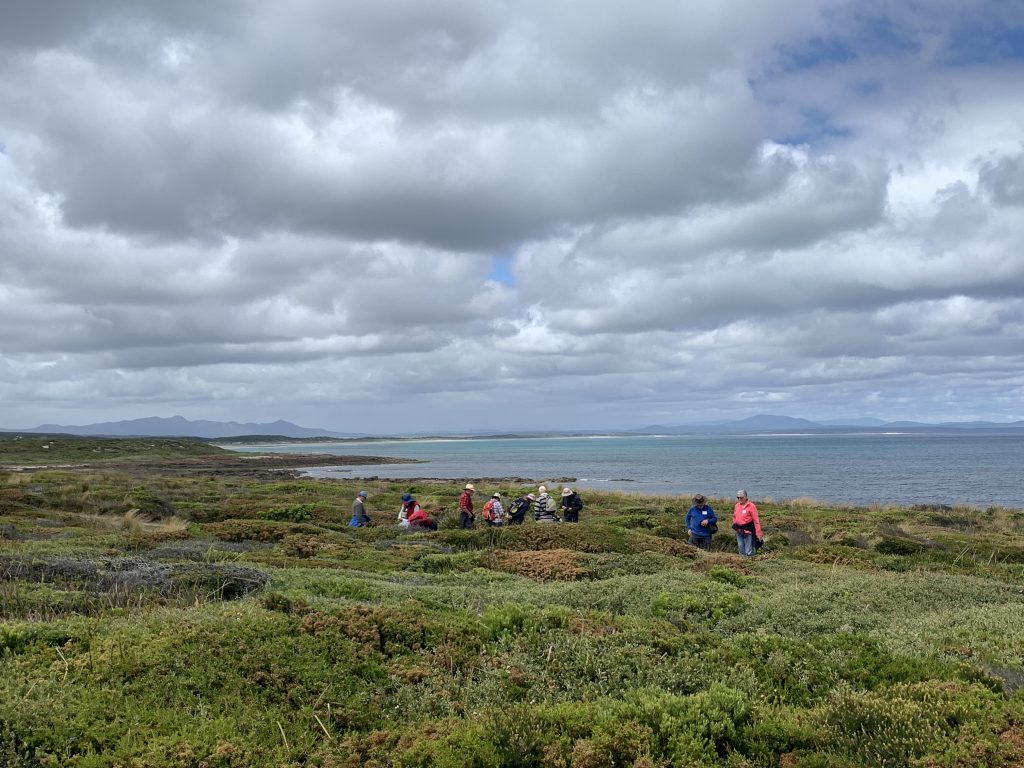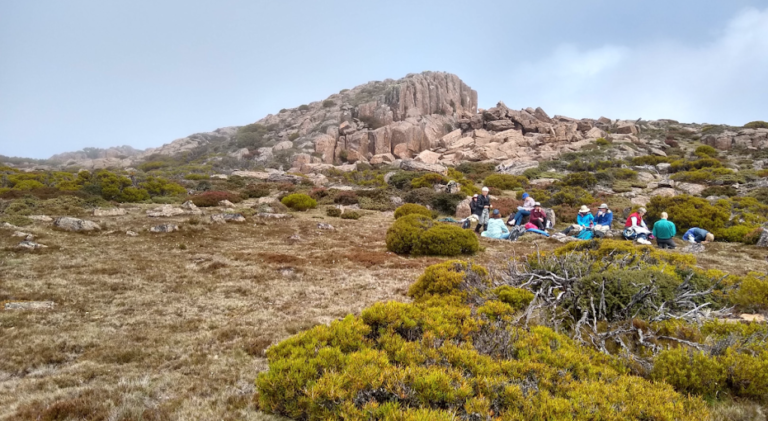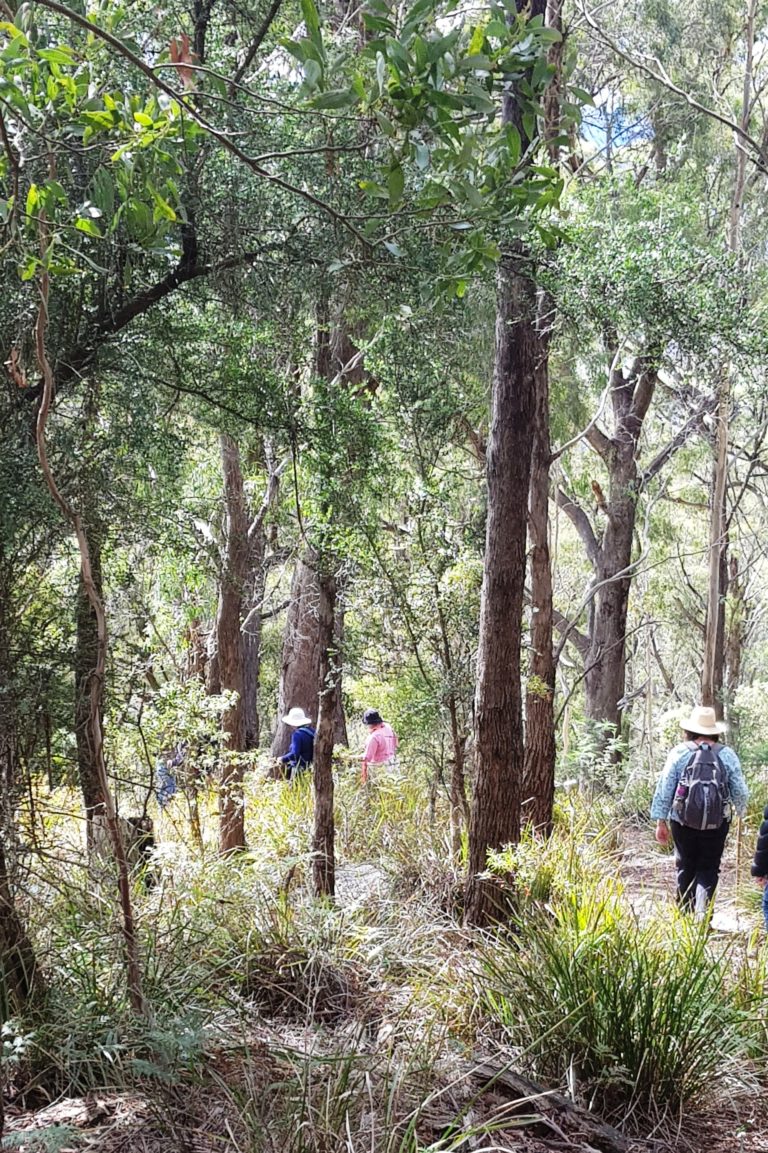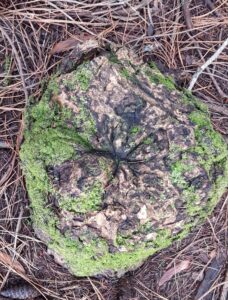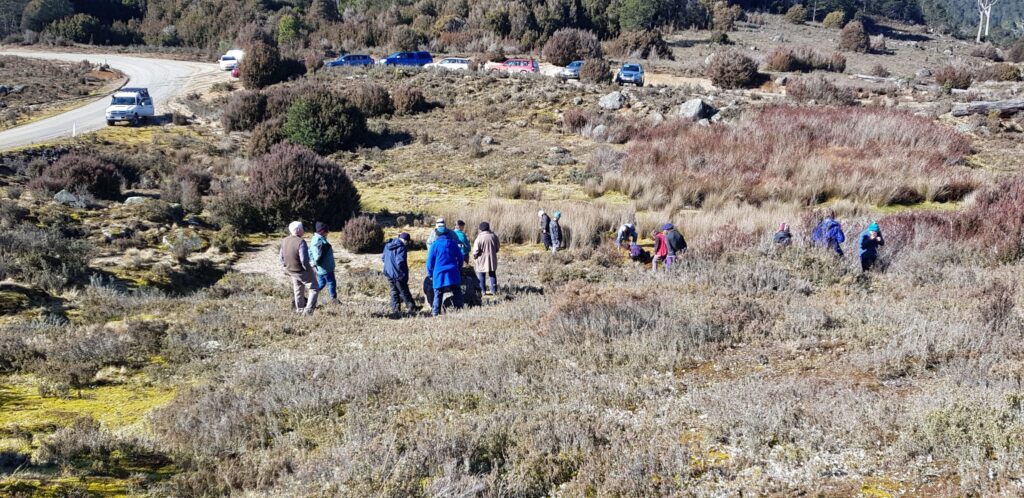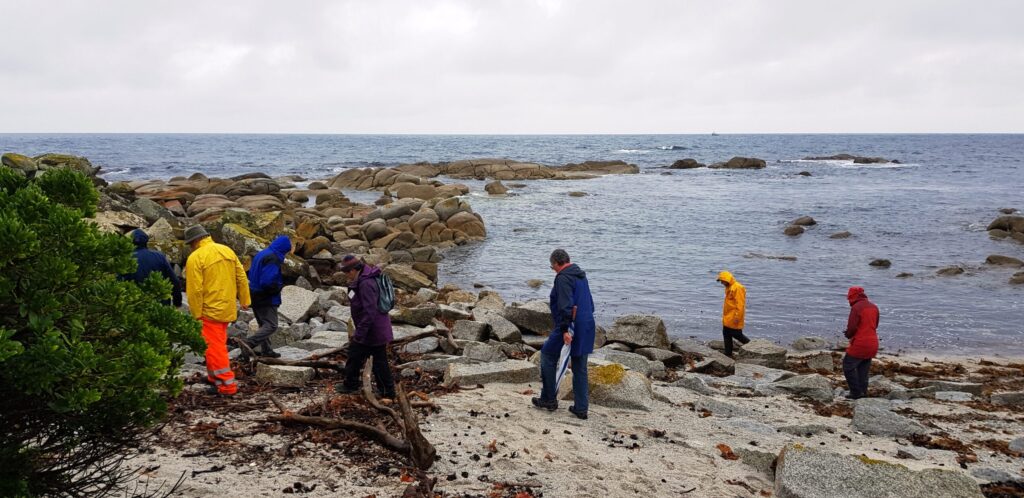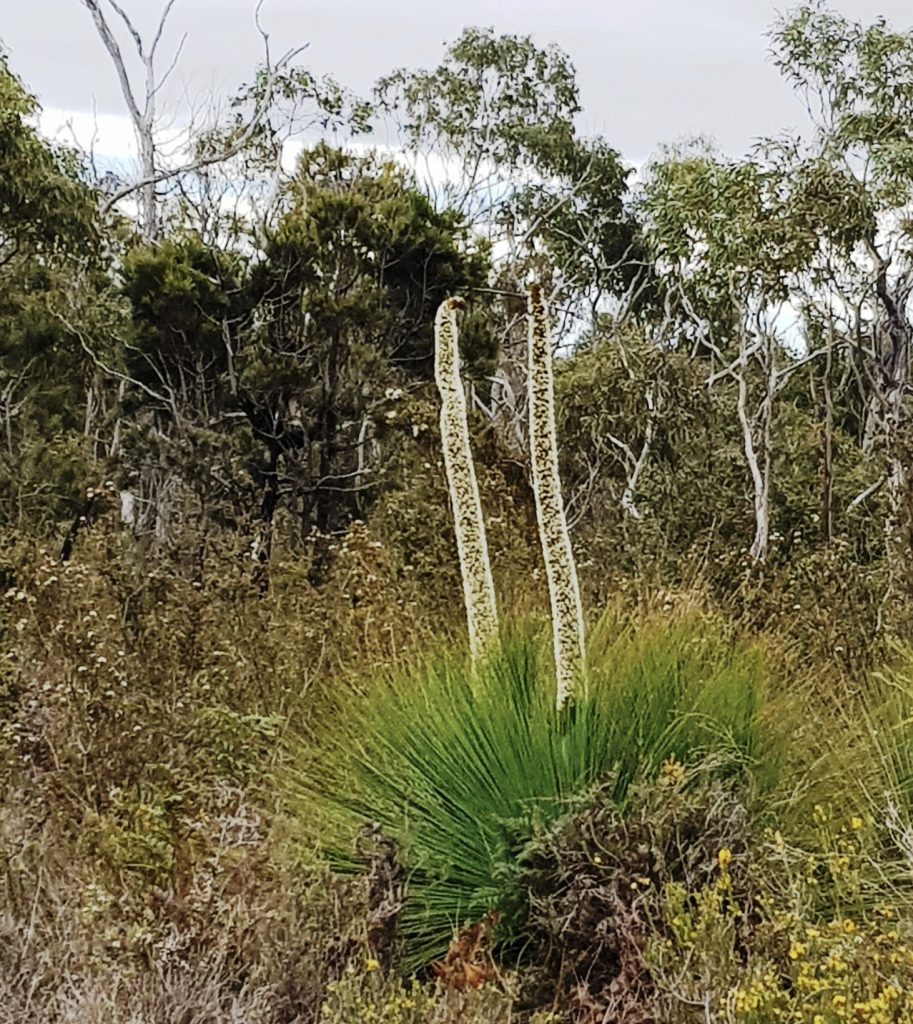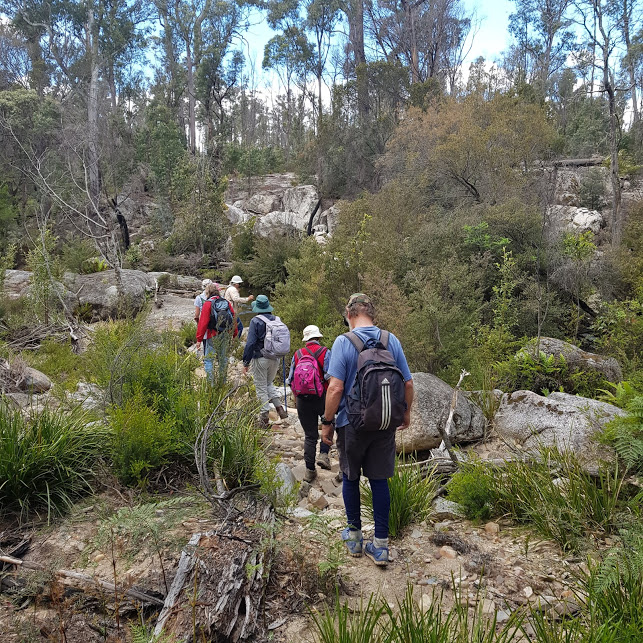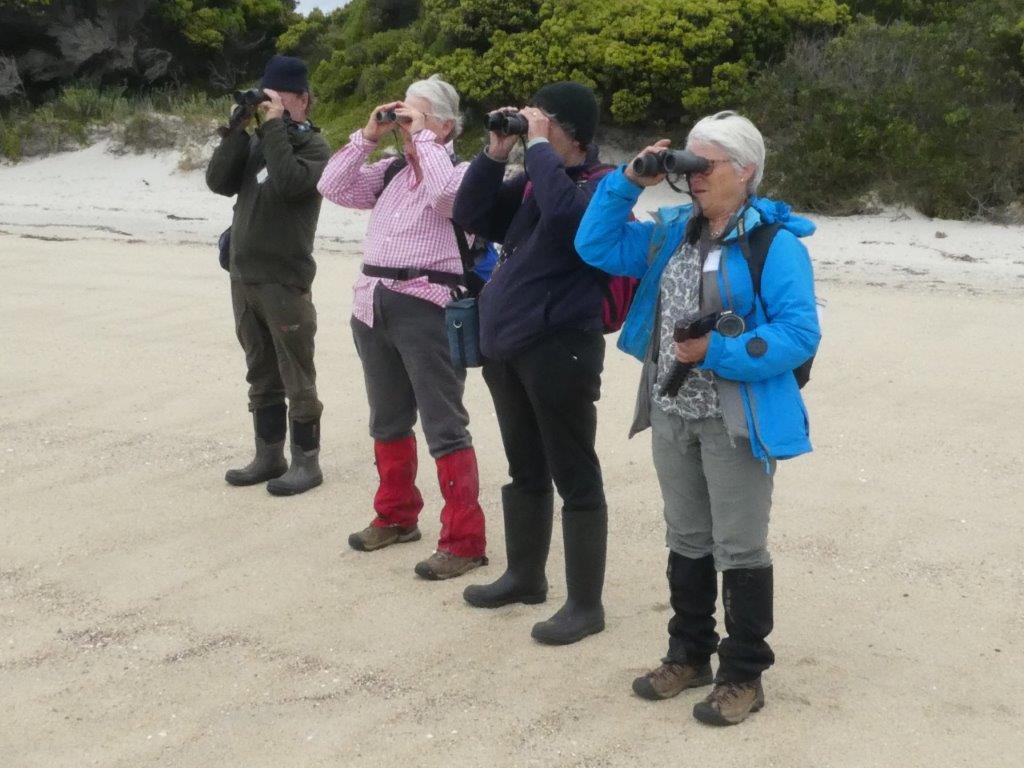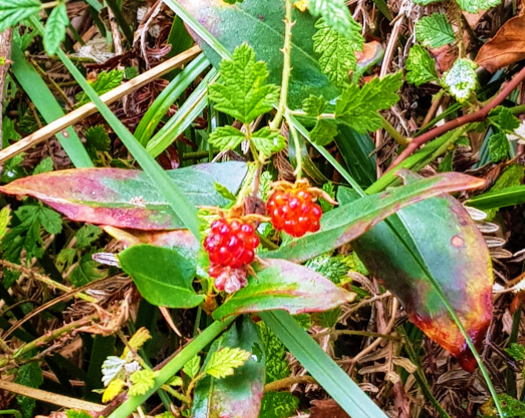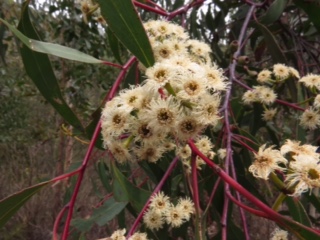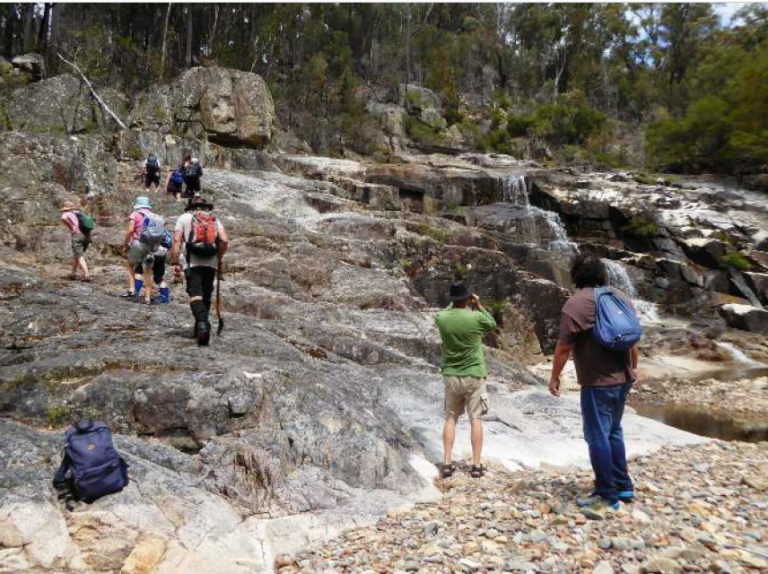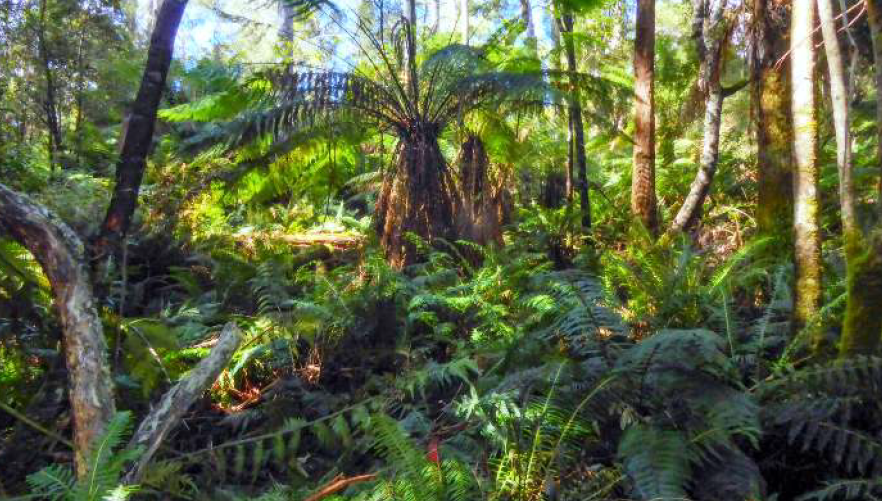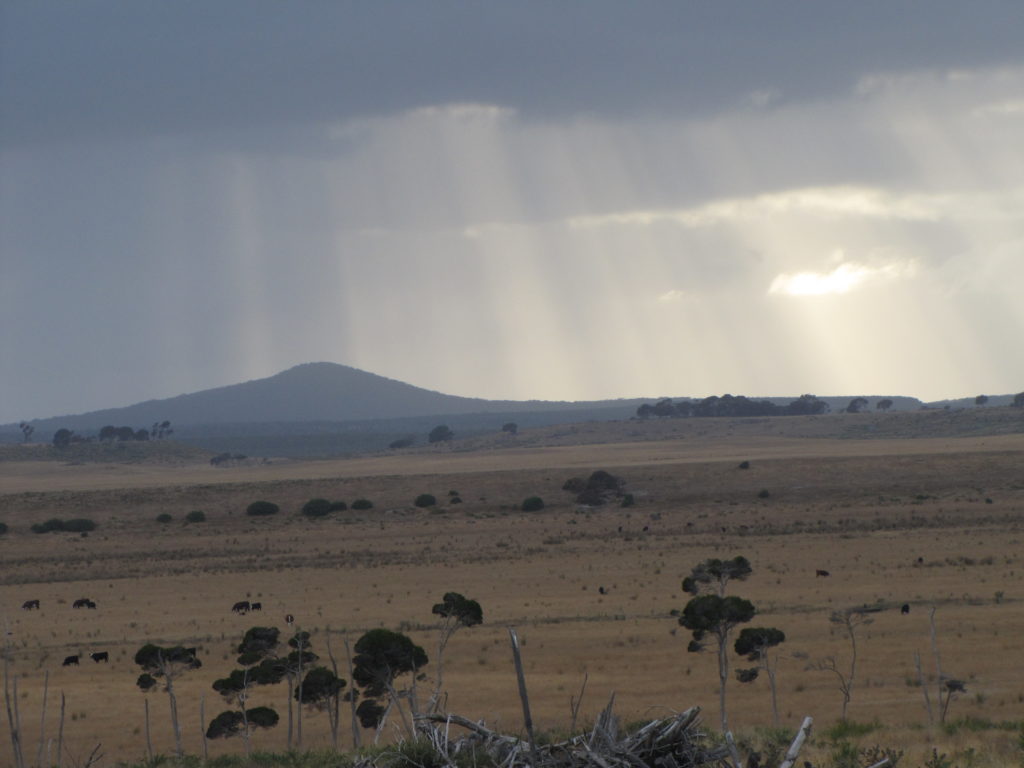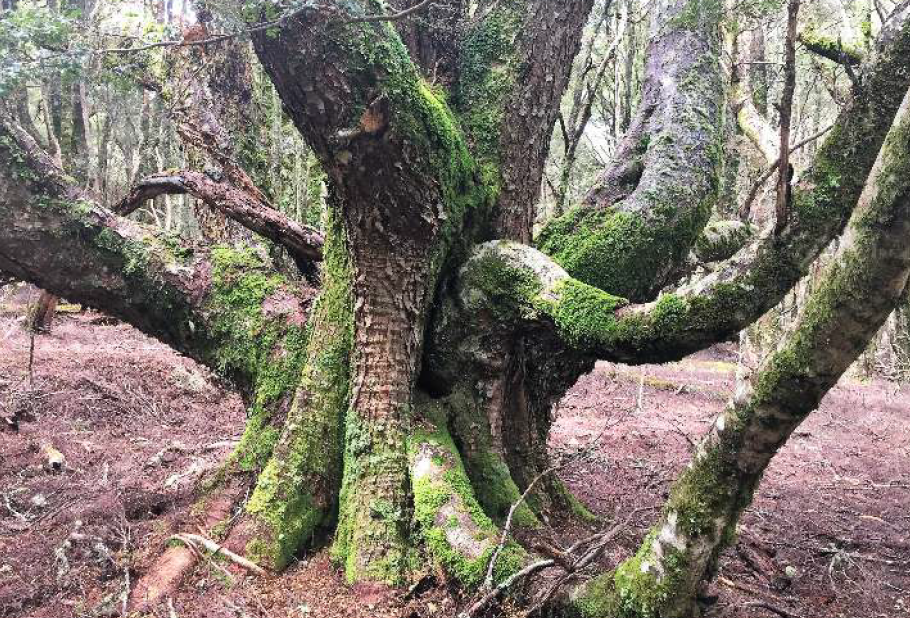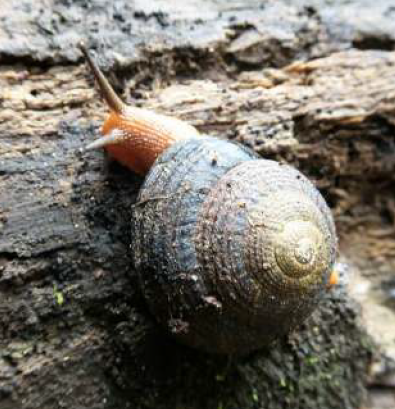Category Archives: Activities
2024
January 13th, Mt Michael
Craig Searle lead this fascinating circular walk which follows various old roads, marked tracks and creek-sides, through mature myrtles to a 810m summit boasting 360 degrees views.
Click here for the report and lots of photos from the day
February 10th, Narawntapu
Anne Witherden lead an exploration of the Narawntapu National Park near the Rubicon River and the Asbestos Range.
March 9th, Mt Horror and more
A visit with Mike to the top of Mt Horror on a very murky day, and then to the historic areas of Forester and Pearly Brook.
Here’s the report
April 13th East Sandy Point
Ross lead us on an expedition to East Sandy Point, part of the Double Sandy Point Conservation Area. We explored the dunes and discovered rhizoliths, structures formed when a root becomes encased with calcium carbonate and then exposed when wind blows away the sand.
Here’s the report, and photos
May 11th Briseis Water Race: Flumes and fungi
Lloyd lead us on a 10km walk along the remains of the race, built in 1902 to transport water from the Ringarooma River to the Briseis Tin Mine at Derby. There were a lot of fungi too.
Here’s the report
8th June
Sloop Lagoon and Big Lagoon
Led by Alex, the group botanised, learning the history of the area and listening to local environmental hero, Todd Dudley, explain his revegetation of a degraded landscape.
Here is the report
14th September
Cape Portland, Musselroe Wind farm
Highlights were seeing the technology at work to protect the Wedgetail Eagle and White bellied sea eagle from the blades of the turbines. And the discovery of two orchids.
The report is here.
12th October
Orchid hunting at Ansons Bay
A very pleasant walk along the bay and the river and on the tracks above. At least 10 different orchids were found. Here’s the report
9th November
Exploring the foothills of Mt Arthur.
Here’s the report
2023
March 11th
Low Head with Marita Bodman
A walk from Bellbuoy Beach to Low Head, along a basalt cobbled shore, then a sandy beach collecting seaweed. A visit to the Low Head Community Garden, and a talk by Marita about a woman ahead of her time – Florence Perrin.
Here is a link to Marita’s talk
And a link to the seaweed we collected.
April 22nd
Fungi foray at Diddleum with Dr Genevieve Gates.
Over 60 fungi were spotted.
May 13th
A walk up Mt Scott
Mike Douglas lead us on the walk, through beautiful forest to the summit ridge.
June 10th
Binalong Bay to Dora Point
A coastal walk featuring blue gums, granite coastline, She-oak forests, sandy beaches, and huge rocks. Led by Pam Bretz.
September 9th
Waterhouse Conservation Area
A beautiful and fascinating walk through Allocasuarina forest, then heathland, from Blizzards landing to Ranson’s Bay
October 14th
Humbug Point Nature Recreation Area
November 2023
Wind farm, Cape Portland
From the Little Musselroe River, across paddocks to the coast, a day with a wide variety of flora, some pelicans, and a clear view of Cape Barren and Flinders islands.
2022
29th January
Four Springs Lake
Dragonflies and Damselflies with Nigel Forteath, Professor of Aquaculture UTAS.
Four Springs Lake was established in the 1990s for recreational fishing, and 16 species of dragonflies and damselflies have been seen here. Nigel and the Nats caught dragonflies, then chilled them for a few minutes so they could be identified and photographed.
12th February
Ben Lomond alpine circuit
The Field Nats traversed the Little Hell pole line circuit, reaching a height of 1546 metres. Flowering snow gentians were abundant, and the most striking wildflowers were the beautiful silver snow daisies (Celmisia). The views were magnificent, with evidence of previous glaciations and later intensive shattering of the heavily jointed dolerite rock by frost action. The great block fields and screes of Ben Lomond are said to be the most extensive in the world.
March 12th
Birds at Native Point
Seen and/or heard: Brown falcon, Brown thornbill, Brush bronzewing, Corella, Crescent honeyeater, Crested tern, Dusky raven, Flame robin, Forest raven, Golden whistler, Green rosella, Grey butcher bird, Grey fantail, Kookaburra, Little pied cormorant, Little wattlebird, Magpie, Olive whistler, Pacific gull, Silvereye, Spotted pardalote, Striated pardalote, Sulphur-crested cockatoo, Tasmanian native hen, Wattlebird, Welcome swallow, White-bellied sea eagle, White-faced heron, Yellow-throated honeyeater.
April 9th
Ferns at Northeast Park, Scottsdale
Lead by Deb Searle, and armed with fern flips, the Nats discovered an amazing variety of species for such a small area.
September 10th
A walk along the Supply River to the Flour Mill ruins
The banks of the Supply River were lined at times with tussock grass – Poa labillardierei. Also noted were the native cranberry – Astroloma humifusum; storksbill – Pelargonium australe; the fungus Anthracophyllum archeri, and beyond the ruins: Pinkwood – Beyeria viscosa. This is in the Euphorbiaceae genus, the defining feature being a white milky sap in the stems.
October 8th
Palaeontology at Liffey and Poatina. Leader Phil Tattersall
Here is Phil’s report of the day
December 10th
Bare Rock, Fingal
A rocky climb in vehicles to a plateau above Bare Rock, studded with an amazing variety of flora. The native clematis and blue love creeper were still in flower, and we saw about a dozen members of the daisy family, and several species from the family Ericaceae.
2021
February 13th
Ascent of Ben Nevis
Mike Douglas lead us up the steep track to the summit at 1368 metres. From dense regrowth forest of Eucalyptus delegatensis, through a belt of Eucalyptus archeri, then above 1200 metres alpine vegetation, including the beautiful Tasmanian snow gentian. The grand vista from the summit took in Mt Maurice, Mt Albert, Mt Victoria and Mt Saddleback.
March 13th
Whale Rock, Mt Cameron
Whale rock, on Mount Cameron’s south West peak, is a spectacular boulder resembling a breaching whale emerging from the granite slab. We walked through open woodland of bracken, dotted with large stringybark and black peppermints, their trunks blackened by bush fires. Also common were caterpillar acacia, bulloak, banksia, kunzea and tea tree. Then we passed between massive sculptural boulders with drifts of the rock orchid Dockrillia clinging to them. From the huge steep granite slab beside Whale Rock, where we stopped for lunch, there are breathtaking views to the west across the Mt Cameron Regional Reserve, and north to the coast and the mouth of the Ringarooma river at Boobyalla.
November 13th
Mt. Barrow Discovery Trail with Len Gillett
We explored the Trail in vehicles, interspersed with short and interesting walks. Remains of the timber industry going back to the mid 1800s were seen, as well as the mightier destruction caused by forestry happening right now. We picnicked at the rather neglected discovery centre, and found many orchids in bloom. Our last stop was at the Weaver’s Creek Waterfall.
2013
February
Black Creek pools and Derby tunnel
Lunch and a ramble at the pools. Then to the 3.7 metre-long tunnel cut through solid granite in the early 1880s by the Briseis Tin Mining company. We saw glow-worms, Arachnocampa tasmaniensis, and the cave spider, widely distributed in Tasmania – a top-level predator maintaining a stronghold around the entrance zones to caves and tunnels.

March
Bush-food day at Little Musselroe
April
Mt Cameron Range – the Skywalk
May
Tomahawk walk and talk with Aboriginal elder Patsy Cameron
Patsy shared her extensive knowledge of Aboriginal culture, local plants and animals, and bush tucker.We were introduced to “cunnygong” (pigface), the natural aloe vera for burns and ant bites. Also of note was the native cranberry, Astroloma humifusum, Diplarrena moraea, the white flag iris, a favourite plant for basket weaving. And an unusual species of native cherry, Coastal Ballart, Exocarpus syrticola,
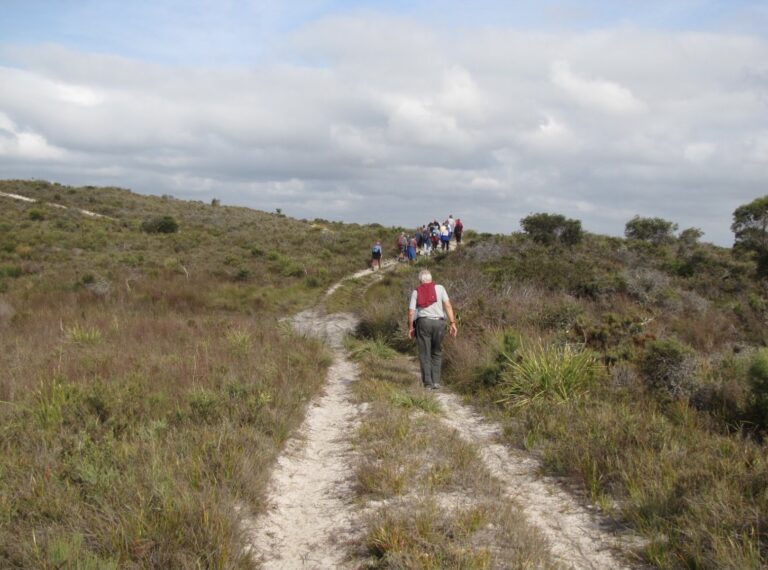
June
Blackman’s Lagoon
Blackman’s Lagoon covers 28 ha. And is an important site for the rare State and Commonwealth protect-ed dwarf galaxias Galaxiella pusilla. This is a small scaleless species which grows to a maximum of 40mm and can survive in the substrate even when the water dries up. A list of native species and bird-life is here
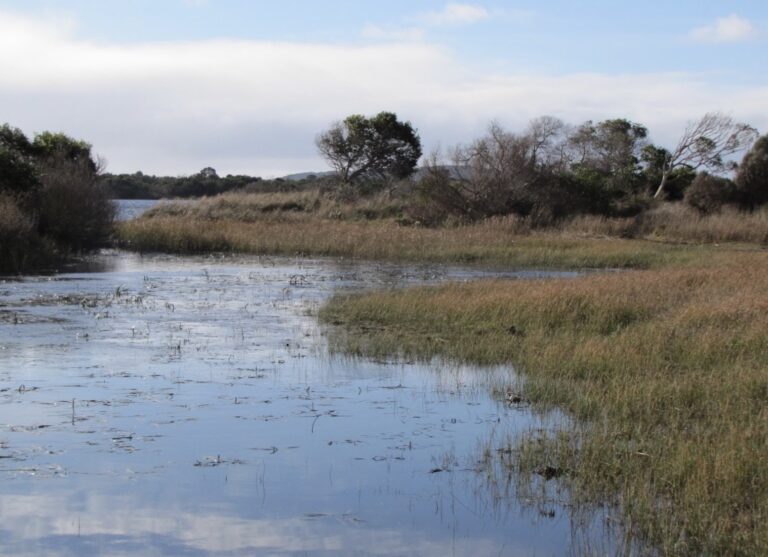
July
Rocky ramble Mount Cameron
A small band of nine members enjoyed this walk partway up the Wedgetail Peak Track, starting from the Field Study Centre. The track wandered through a woodland of gnarled black peppermints, stringy barks and white gums and then climbed up rocky slopes dotted with granitoid monoliths resembling abstract sculpure
September
Harridge Falls
After a scramble down the steep, humus-rich and damp hillside we slid and wended our way over fallen logs covered in beautiful fungi such as the “curtain crisp” until we reached the Weld River and the falls.
We disturbed an echidna at his ant lunch and caught a glimpse of the prized pink robin. We also spotted some maroon hoods, Pterostylis pedunculata, thriving in the sandy damp conditions.
October
Federation of Field Nats get-together Port Sorell
November
W.A.G. Walker Rhododendron Gardens, Lalla
In the gullies Tree ferns, dogwoods, Bursaria, white gums and various species of rhododendrons. Higher up, Eucalyptus obliqua and a stand of Eucalyptus viminalis,
On the ground, maroonhoods, the curtain crisp fungus, and the dogs vomit slime mould. Above, the crescent honeyeater, the golden whistler, pardalotes, thornbills, cuckoos, the shrike thrush, and everywhere wrens and robins.
2014
February
Vale of Belvoir
The Tas. Land Conserv-ancy held an open day for exploring the Vale of Belvoir with TLC staff and expert supporters as guides.
The Vale of Belvoir is a large open limestone valley located about 15 km NNW of Cradle Mountain, in the lee of the Black Bluff Range. It is about 10 km long by 2 km wide, trends NE-SW, and has an open grassy floor flanked by strips of ancient rainforest and eucalypt forest.
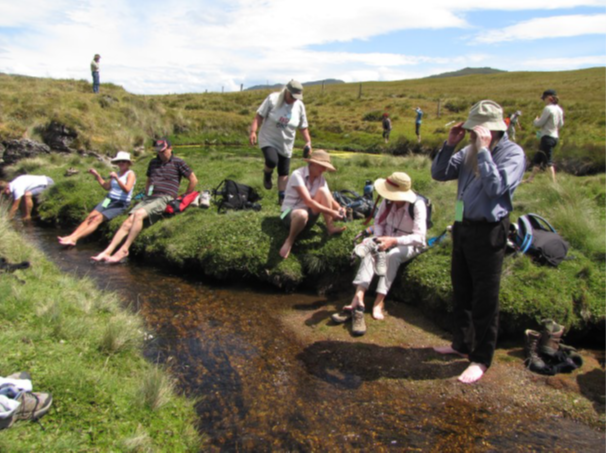
March
Shoreline monitoring, Weymouth
We chose a site for counting and measuring near a launching ramp at Weymouth. It consisted of rocks. It looked unlikely. But it was actually an extremely rich and diverse area: Rosette barnacles, common sea urchins, eleven-armed seastar, sea apple, decorator crab, hairy-stone crab, even a blue-ringed octopus.
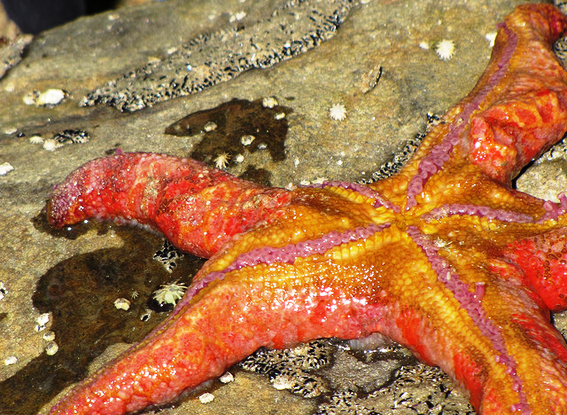
September
Scottsdale – Burrowing crayfish
We celebrated National Threatened Species Day with a visit to the habitat of the Scottsdale Burrowing Crayfish, at Northeast Park (Scottsdale) then on the Old Waterhouse Road
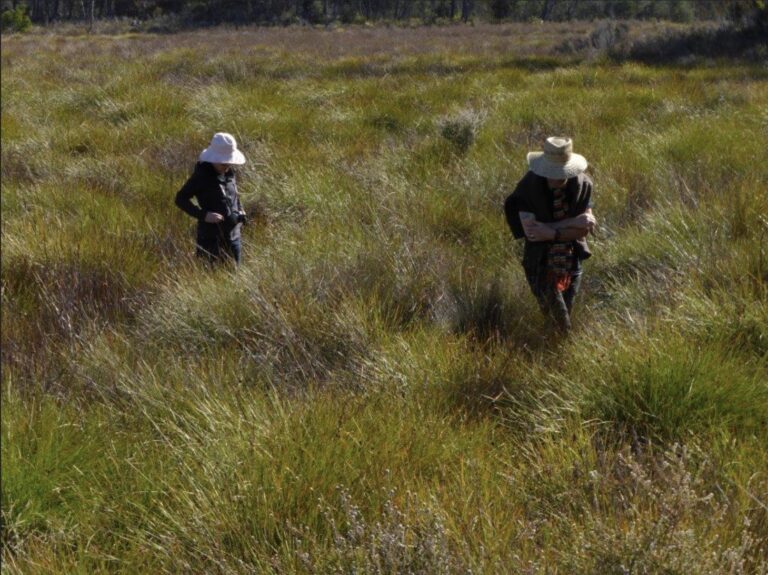
October
Searching for the stag beetle, Goshen
Ian and Kim Matthews have a bushland block at Goshen, north-west of St Helens. In October 2014 they hosted our club for a fascinating day during which we heard the story of the discovery of this rare stag beetle, met the widow of George Bornemissza, after whom the beetle is named, and were guided by Mike Bouffard on our search to find a live specimen
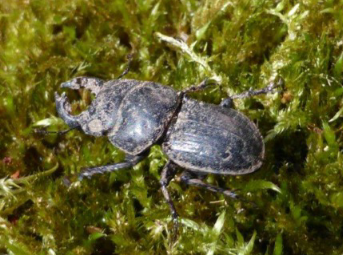
- November
Exploring Anson’s Bay
We ambled along Jenny Bicanic’s favourite paths looking for orchids, listening for birds.
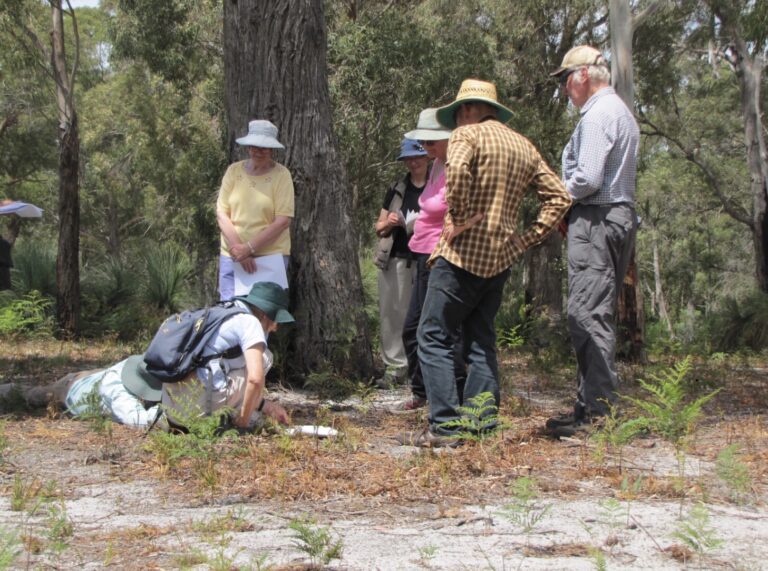
December
Bird watching, Greens Beach
The December activity involved bird-watching on the property of Don and Barbara Pitt, 340 hectares at Friend Point, near Green’s Beach, where the Tamar River meets Bass Strait.
The complete list of birds is here

2020
February 8th
Ben Lomond
Mike Douglas lead us up a rocky path across an extensive dolerite block field, with impressive hexagonal columns vanishing into the mist. Many alpine plants were in flower. We had lunch on the plateau of the Plains of Heaven, where the massive roche moutonnée rose behind us.
March 14th
Merthyr Park and Mt Direction
Len Gillett lead us on these two walks which are approximately 16 kms apart. The highlight at Merthyr Park was seeing the humungous ghost fungus omphalotus nidiformis, which glows in the dark. At the summit of Mount Direction we saw the interesting remains of a semaphore station from the early 1800s – a signal system which sent information about Tamar River traffic between Low Head and Launceston.
September 10th
A trip to Eddystone Point
Eddystone Point, also known by its
Aboriginal name Larapuna, is in the Mount William National Park and marks the northernmost tip of the Bay of Fires region. Larapuna is the homeland of the Palawa (indigenous Tasmanian) people, and features the historic Eddystone Point Lighthouse.
October 10th
Winifred Curtis Reserve, Scamander.
The reserve is an 80 hectare ecosystem adjacent to Henderson Lagoon, with dry sclerophyll bushland, heath, marshland, wetland, dunes, and abundant bird life. Unfortunately It was too wet underfoot for the Field Nats to get to dunes or lagoon.
Winifred Curtis, 1905-2005 was Tasmania’s most distinguished professional botanist.
November 14th
A field trip to Upper Scamander.
After walking from the washed-out bridge at Brilliant Creek, and lingering over a wealth of orchids along the road-side, we crossed the Scamander River, and left the road, walking through dry open sclerophyll forest dominated by Eucalypts (including E. amygdalina – black peppermint, and E sieberi – iron bark).
December 12th
Cape Portland
A trip to the Musselroe wind farm to explore the northern coast of Cape Portland, and watch for migratory sea birds.
More about the wind farm here
2019
March
Mutual to Moorina
A gentle 5km walk along the banks of the beautiful Ringarooma River. We passed some fine stands of myrtle, blackwoods, man ferns, mother shield ferns and kangaroo fern. Also native edible fruiting plants – the native currant, raspberry, cherry, and purple appleberry.
April
A leisurely look at three gardens in the Bridport area which have been managed as habitats for wildlife.

May
Fungi Foray, Skemps, Myrtle Bank
The Launceston Field Naturalists Club owns and operates the John Skemp Field Centre. It is situated on approximately 60 hectares (148 acres) of wide open spaces, wet and dry sclerophyll forest, fern gullies and ponds on Skemp Creek. A number of nature trails have been developed over the whole property.
June
A 12 km walk along the North East Rail Trail from Kamona Station to Tonganah.
There were fungi, there were orchids and such a richness of vegetation. Facing north, tall trees- Eucalyptus obliqua. At the foot of embankments plants that thrived in wetter conditions. Excitement when we found colonies of Mosquito orchids – Acianthus pusillus, and the fringed helmet orchid – Corybas fimbriatus.
October
Federation of Tasmanian Field Naturalists weekend
In October it was the North East Field Naturalists turn to welcome members of other Tasmanian field naturalists clubs for the biennial weekend get-together. We hosted visitors in our homes, provided a meal on the Saturday night and organised two walks.
November
Scamander : A Day with Todd
Todd Dudley focused on the Skyline Tier project. We visited a plantation site that had been logged, exhibiting the first step back to native forest. We looked at some regeneration sites to see progress after burning and weeding, and heard about the detrimental effects of mono-culture associated with plantations.
2018
February
Constable Creek wade and walk – St Helens.
A warm watery stroll up the creek, where many ferns were identified, and a variety of other vegetation including dogwood, silver wattle, bulloak and native cherry. A Tasmanian water spider, Megadolomedesjohndouglasi, was also seen.
April
Dorset Dredge – Gladstone
A walk through the bush to this relic of mining history. Historians and Geologists told the story.
May
Scott Bell’s devil enclosure
Scott told us how the project has progressed. Steve Cronin shared some information on many different habitat types in the area. A bonus was the chance to see a carbonised piece of pine between 20 and 23 million years old revealed by an excavator whilst digging a dam.
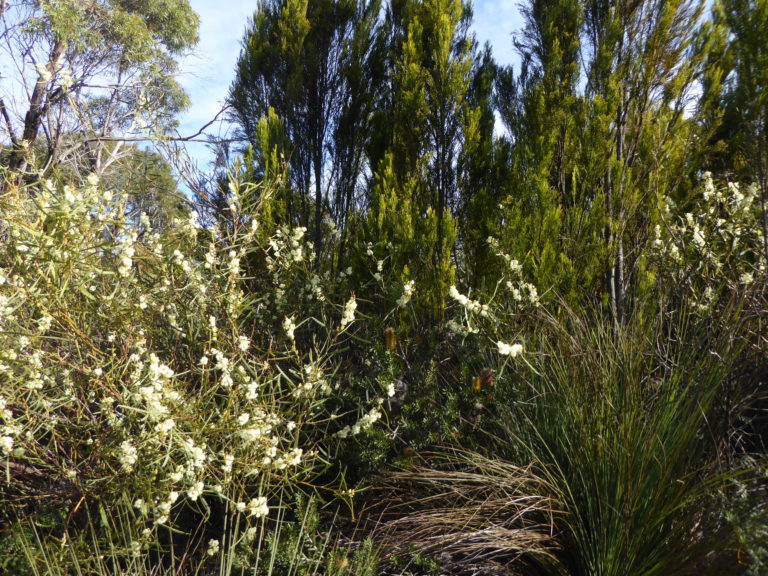
June
Brid River Reserve at Duncraggen Hill
A walk through a narrow Crown river reserve extending along the Brid River for 3.5 Kms. It is surrounded by State forest, and is a dry-to damp sclerophyll forest dominated by stringy bark and black perppermint, with a scattering of fine old whitegums.

October
Mt William National Park – Boulder Point
Mt William rises above a plain which is near the coast and contains heathland vegetation, grass trees (Xanthorrhoea) and black peppermint (Eucalyptus amygdalina). Three plants of special interest were observed on this walk. Dockrillia striolata (streaked rock orchid), Hibbertia aspera (rough guinea flower) and Pterostylis dubia (blue tongued orchid). A family of five or six fledgling dusky woodswallows (Artamus cyanopterus) was also seen.
November
A walk up Mount Maurice
Climbing to an altitude of 1100 metres, we saw three main types of forest: wet sclerophyll (mainly Eucalyptus delegatensis, or whitetop), mixed forest (whitetops with a predominantly myrtle understorey), and rainforest. At the summit, with it’s 360 degree view, was more flora, including Richea scoparia, a prickly plant endemic to Tasmania.
December
Diddleum Plains
The track, which started at East Diddleum, followed the route which the Camden irrigation pipeline now takes, and we were disappointed to realise that soon many beautiful manfern glades, myrtles and sassafras will have to be cleared to make way for the pipeline. The shady manfern gullies give way to the radiata pine forest, then the track meanders through mature native forest, An interesting discovery was a largeforest land snail, Anoglypta launcestonensis.

